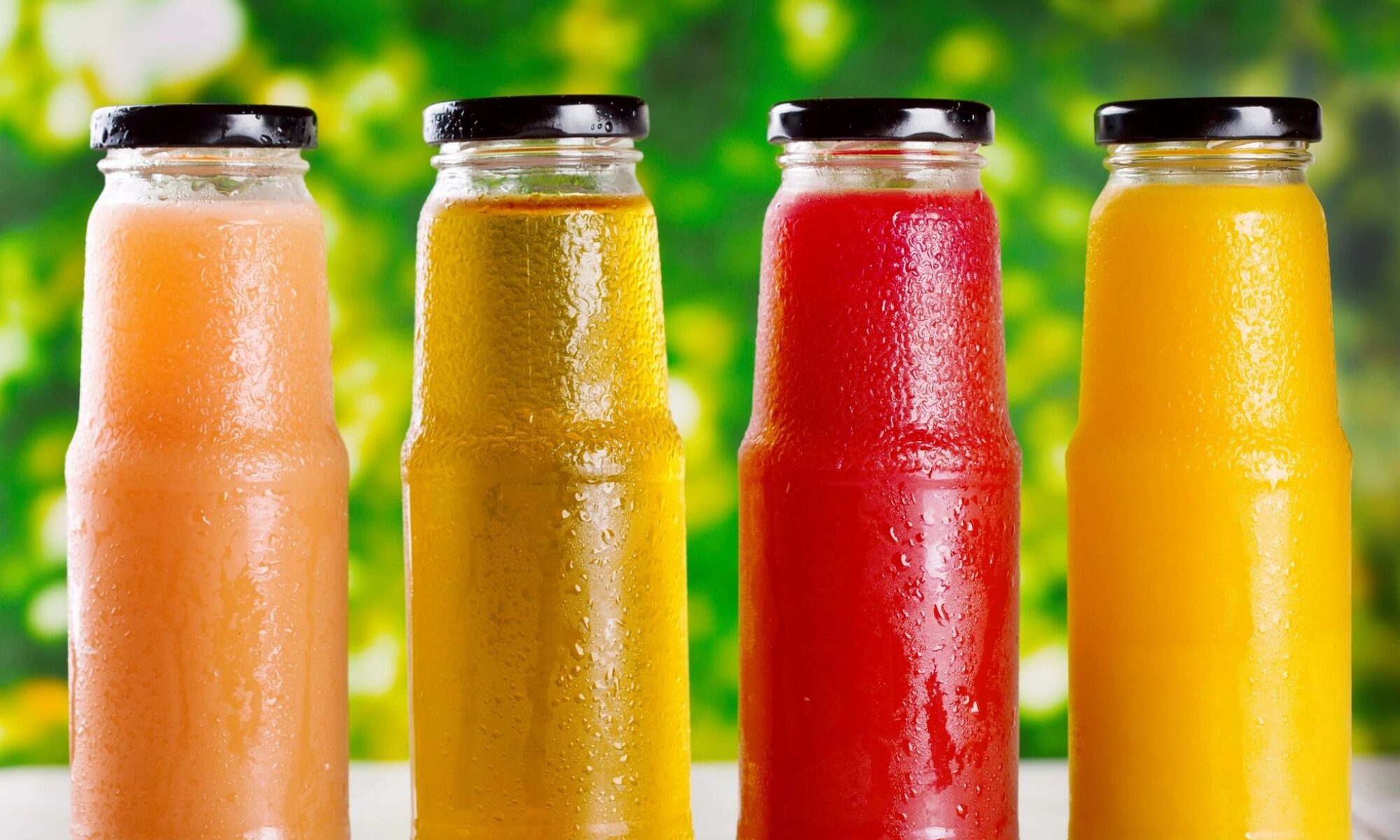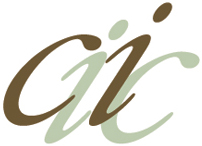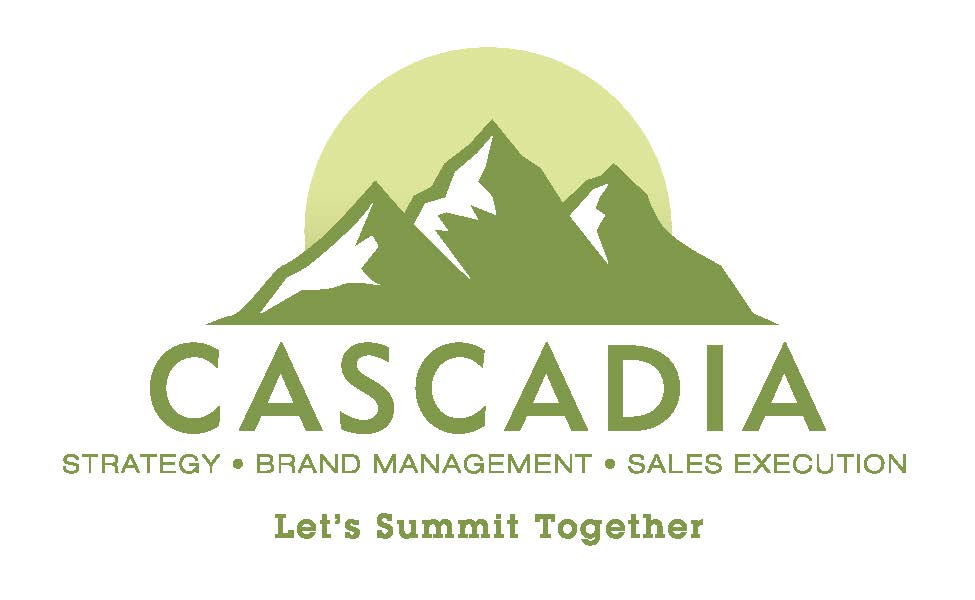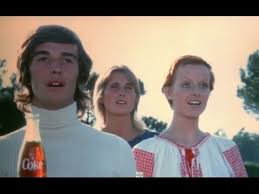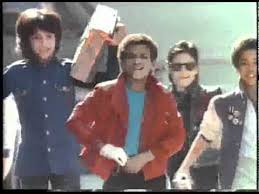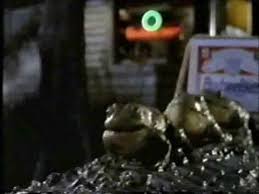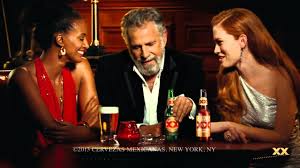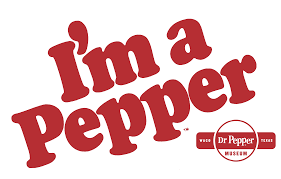Beverages That Are Both Healthy And Taste Good Really Do Exist
Now more than ever before, we must consider the kinds of food and beverages we intake, and if they are bringing value to our bodies. A healthier body, and thus, a stronger immune system can help you live longer and improve your chances of fighting off diseases. With the COVID-19 pandemic outbreak, every American should be reevaluating what they consume and how to improve their overall health. Think of your body as a car. Are you putting good fuel in it? Are you keeping all of the parts in good condition and up to spec?
There are tons of foods and beverages that are delicious, yet not good for you. It is always a challenge to find foods and drinks that are both healthy, and taste good. That is the purpose of this edition of the blog. We are going to take a look at some healthy beverages that not only provide your body with tremendous health benefits, but taste good too! Spoiler alert, some exist in categories you may not have even been aware of.
Kombucha
Kombucha is a fermented tea that has been around for thousands of years. Rich in probiotics and antioxidants, Kombucha can help fight disease and kill harmful bacteria in your body. In addition, it has been proven Kombucha tea has many of the same benefits as green tea. Those include aid in weight loss (boosted metabolism) in addition to lowering the risk of heart disease. If all that wasn’t convincing enough, studies have shown Kombucha can slow the digestion of carbs, which reduces blood sugar levels. This is particularly beneficial for those who suffer from Type 2 Diabetes.
Product Feature – Mother Kombucha

Mother Kombucha features two Kombucha based products — a Kombucha tea and their “Agua Bucha” which is a Kombucha infused sparkling water.
The Kombucha tea comes in a recycle friendly glass bottle and features eight different crisp and refreshing flavors. There are only 35 calories or less per bottle, and it is USDA Organic, Vegan and Kosher Certified. All the benefits of Kombucha combined with great taste is what makes Mother Kombucha so great. Turmeric Ginger Lemonade, Goji Grape, Lavender Mojito and Hopped Passionfruit are just some of the 8 delicious flavors you can choose from. The Agua Bucha is a healthier version of sparkling water — with natural organic acids, B vitamins, 4 calories and 1 gram of sugar. They have three flavors – lemon, key lime and grapefruit.
Alkaline Water
Alkaline refers to the pH level of a substance. It is measured on a scale of 0-14 – 0 being the most acidic, 14 being the most alkaline. Normal tap water is usually around a pH level of 6.5 to 7. The more alkaline the water is, the better it is for you. Water with high alkaline levels have health benefits that include anti-aging properties, colon cleansing properties, higher hydration effectiveness, immune system support, detoxification properties and can even aid in weight loss. It is worth noting that scientific evidence is still developing on many of these proposed benefits, however higher alkaline levels are proven to be better for hydration than acidic products.
Product Feature – AlkaWonder

With a pH level of 9.4, AlkaWonder ranks among the highest levels of alkaline waters on the market. They’ve won the International Taste and Quality Institute’s Superior Taste Award three years in a row (2018-2020) and are the official hydration partner of Zumba. Other known brands such as Fiji Water and Evian feature products that range in the mid to upper 7 levels of pH. The product is naturally high in pH levels which is actually different from other artificial alkaline waters that run through a mechanical intervention process.
Hydrogen Water
Hydrogen Water is true to its name, water, with extra hydrogen molecules added to it. Like alkaline water, hydrogen water due to its molecular compounds can provide additional benefits than just regular water. Some studies suggest that drinking hydrogen water may decrease the effects of oxidative stress, improve metabolic syndrome, and boost athletic performance.
Product Feature – HyVida

HyVida is a canned sparkling water that is both hydrogen and magnesium infused. It comes in three refreshing flavors – organic raspberry, organic lemon-lime, and pure sparkling water. With no calories, sugar, or carbs HyVida is a great healthy alternative to regular water boredom, especially if you’re looking for something bubbly.
Bottled Water
We’ve covered why water is good for you. But what if there was a bottled water product that has all the natural benefits of bottled water, and is good for the environment too?
Product Feature – Simply Rain
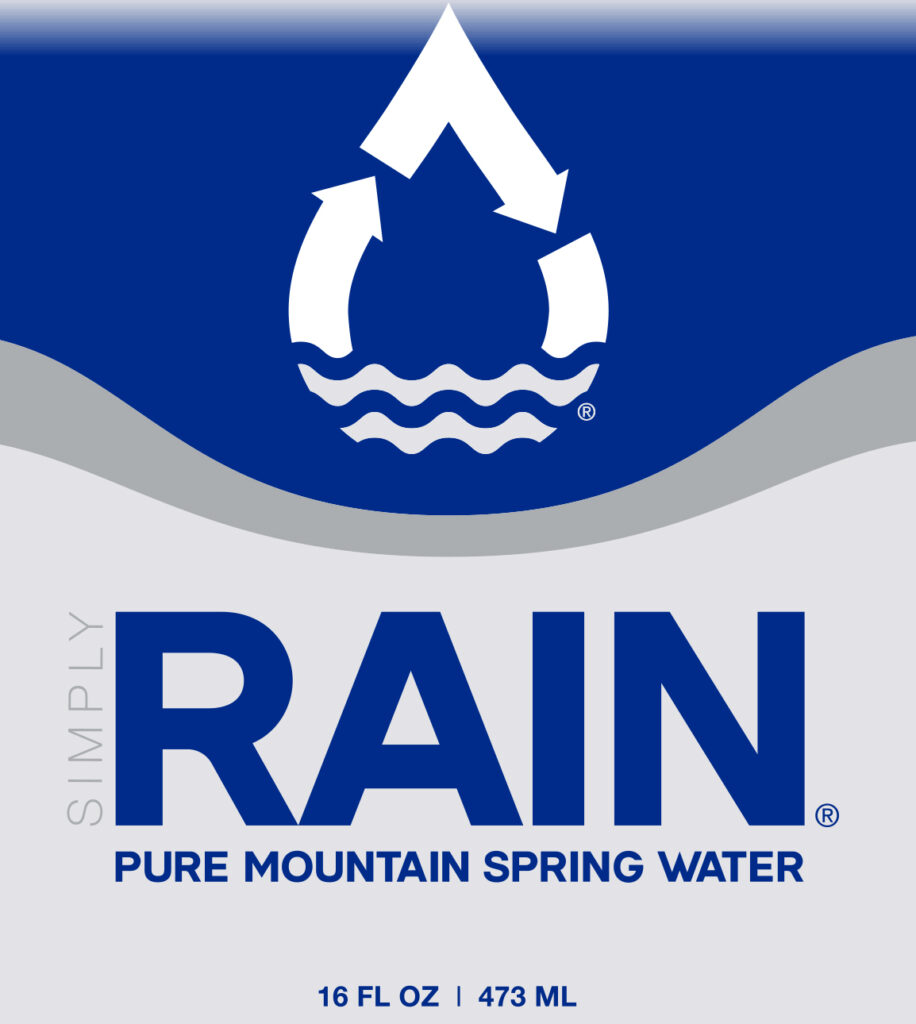
Simply Rain bottled water is single sourced from Montana springs, and comes packaged in an aluminum bottle. Why is aluminum packaging more beneficial? It stays way cooler for starters. In fact 1300x times cooler than bottled water. Additionally, plastic water bottles contain water with microparticles that leaked in via the plastic material. Water packaged in aluminum eliminates all potential for microparticles that make drinking water less pure. Finally, aluminum is recycled more effectively and more often than plastic. We’ve already spoken in previous blogs about the global waste problem we have mainly due to plastic. Utilizing reusable aluminum helps lessen the damage one bottle at a time.
Sparkling Water
Sparkling water isn’t necessarily a health boosting product, but it is a healthy alternative to sugary soft drinks. Some studies have shown that sparkling water can play a positive role in digestion as well. It may improve swallowing, increase feelings of fullness, and reduce constipation.
Product Feature – Sovany Sparkling Water
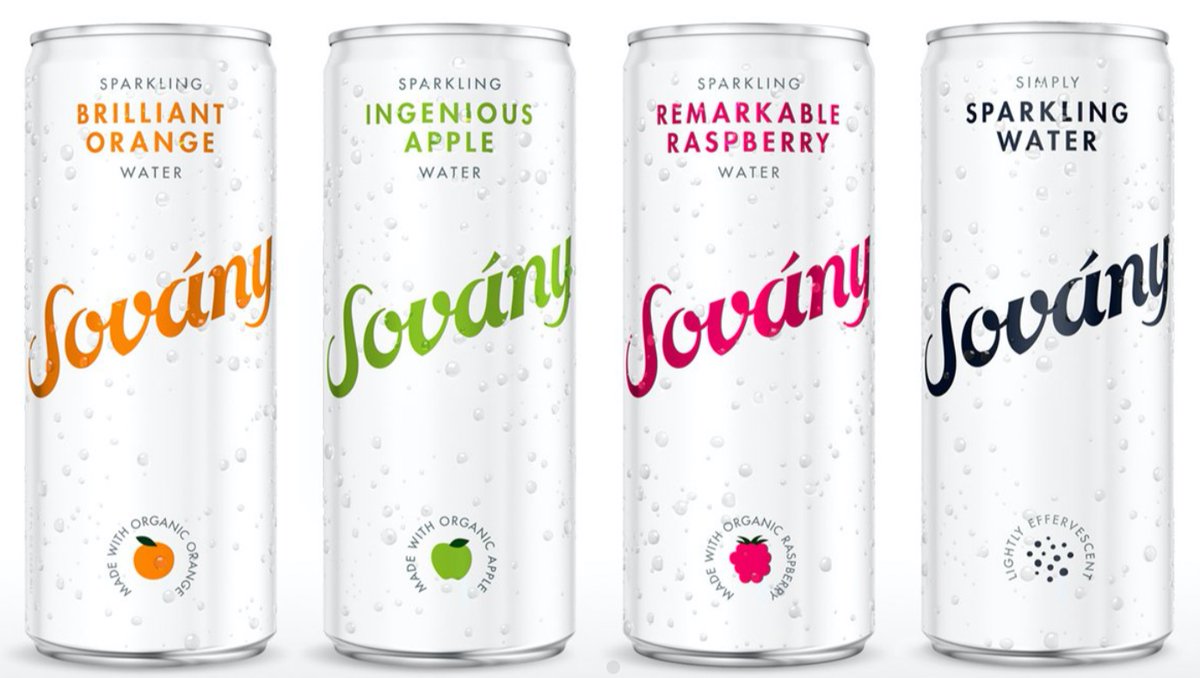
Sovany comes in four crisp and delicious flavors; brilliant orange, ingenious apple, remarkable raspberry, and standard sparkling water flavor. The packaging is recycle friendly, and all of the ingredients are organic Non-GMO. On top of the refreshing taste, there are just 20 calories per can and only about 5 grams of sugar. It’s the perfect drink mixer or soda alternative.
Coconut Water
Coconut water has gotten pretty trendy over the last decade. It is a great source of vitamin C, fiber, antioxidants, and other beneficial nutrients. It has proven to help blood sugar control, and also has been found to be a great recovery drink for dehydration or replenishing electrolytes. It’s one of the many products that should replace Gatorade on the sidelines of sporting events. The fact that it is low in calories and carbs is also a big plus for those watching their intake and trying to maintain or lose weight.
Product Feature – Eliya
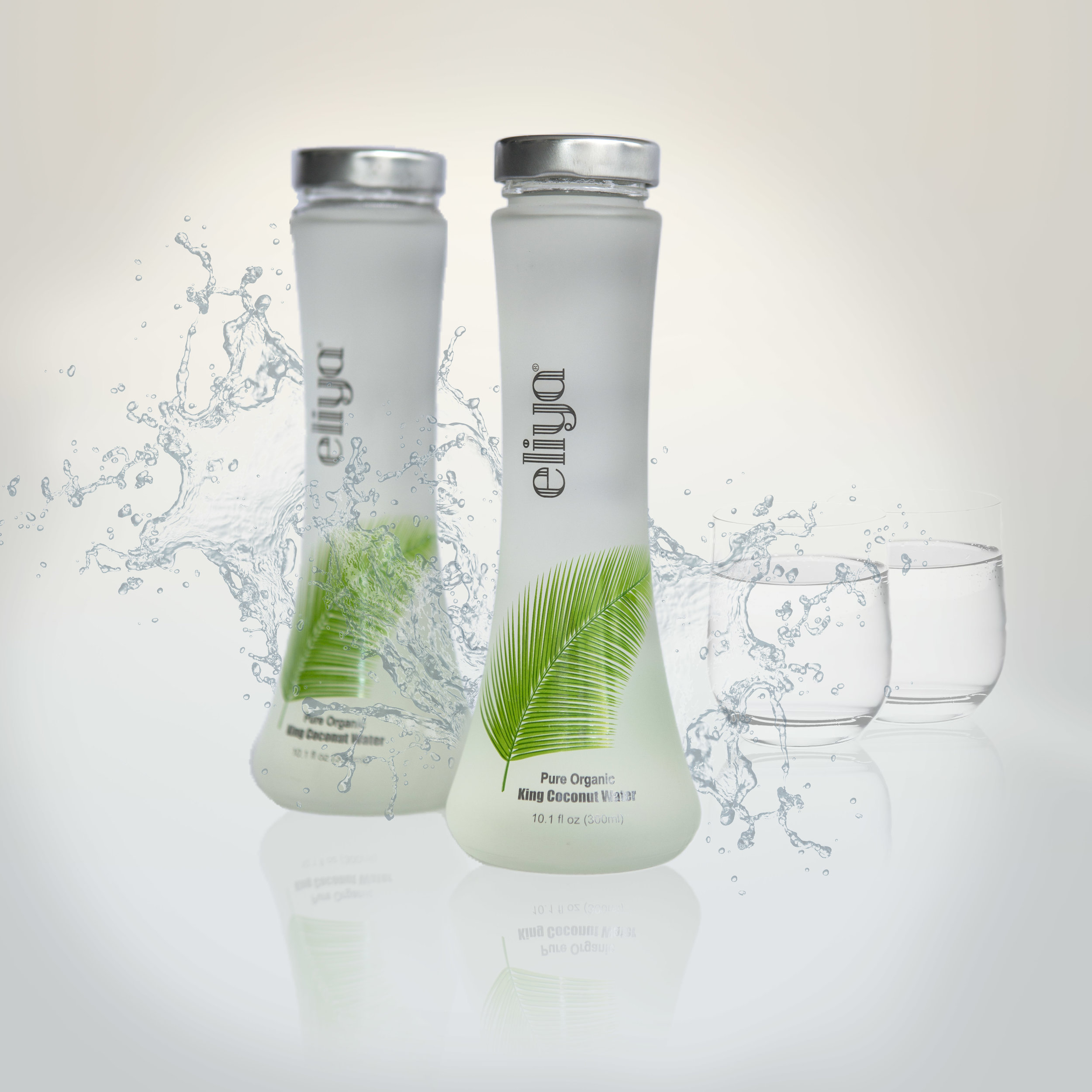
Eliya coconut water comes in one organic flavor of natural coconut water. There are no added sugars, it is USDA Organic, Gluten free, vegan friendly, and every batch comes from the King Coconut of Sri Lanka. The product has more potassium than a banana, the same amount of calcium as a half a cup of milk, only 50 calories and just 8g of natural sugar. Another plus about this product is that it comes in a glass bottle, making it easy to recycle and thus helping our environment.
Cactus Water
Here is a very unique and relatively unknown health beverage. Cactus water is loaded with health benefits so long as the product isn’t loaded with added sugars. As cactus is a prickly pear fruit, it is loaded with anti inflammatory antioxidants, and also contains magnesium and potassium. As a result, cactus water has been found to have a positive effect on skin health, reduce the effects of type 2 diabetes, and it has also been called a hangover cure.
Product Feature – Cactus!

Here is a new organic brand that you likely haven’t seen, but will need to try. ‘Cactus!’ comes in three delicious flavors; organic lime, papaya and watermelon. There are only 30 calories per can, and the added sugar is all organic agave (5 grams). Non-GMO, Kosher, Vegan, Gluten Free, Recyclable — this product has everything from great taste to the myriad of health benefits that come from cactus leaf juice. Don’t be late on the trend where cactus water becomes the new coconut water.
CBD Beverages
Becoming more popular by the day are CBD-infused drinks. CBD beverage enhancers are a form of CBD where manufacturers process it into tiny particles that one adds in their drinks. Users prefer CBD beverage enhancers because they release CBD in small doses, thus allowing the body to benefit from its health effects throughout the day. Some of those benefits include pain and inflammation relief, better sleep, stress relief, and energy boosts.
Product Feature – Wowie (By Tranquini)
Wowie is a product from Tranquini. It was designed as a stress relief beverage made with Hemp and Herbal Adaptogens that help to reduce anxiety, aid focus and promote a sense of calm. It comes in mango lime, citrus mix, watermelon mint, and coconut strawberry flavors. There are only 20 calories per can, and 3g of carbs and sugars.
Probiotics
Probiotics are loaded with health benefits, most notably for improving gut health. The importance of gut health is often overlooked. It affects everything in your body. A healthy gut (microbiome) contains healthy bacteria and immune cells that ward off infectious agents like bacteria, viruses and fungi. A healthy gut also communicates with the brain through nerves and hormones, which helps maintain general health and well-being. With that said, your gut health literally can affect your mood, your thought process, and your metabolism. There are numerous strains of probiotics that
Product Feature – GoodBelly

GoodBelly has a plethora of probiotic products in both the food and beverage space. They feature juice drinks, shots, supplements, yogurts and other foods as well. Being that this blog is about beverages, let’s look at the Juice Drink. There are 9 refreshing Juice Drink flavors including; peach mango orange, strawberry banana, and blueberry acai. Each has 20 billion live and active probiotic cultures per serving and is safe and effective for naturally steadying the gut microbiome. There are gluten free options, as well as no sugar added options. All flavors are USDA Organic.
Calamansi Beverages
Here is another unique beverage from an exotic fruit called the calamondin fruit that is mainly found in Asia. It has been shown to help; lower cholesterol, strengthen immune systems and boost energy due to high Vitamin C contents, in addition to being high in antioxidants as most citrus fruits are.
Product Feature – Brooklyn Crafted Calamansi-Ade

The Brooklyn Crafted Calamansi-Ade is a different twist on lemonade with more health benefits, and equal if not better taste! Refreshing, nutritious, and in a recyclable glass bottle, this product is both sour and sweet. It comes in five flavors including a ginger infused flavor that combines the benefits of both calamansi and ginger in one tasty trink.
Cinnamon Beverages
You know the delicious taste of cinnamon, perhaps from a dessert, or in a cappuccino. But did you know the sweet spice actually has significant health benefits as well? In people with type 2 diabetes, 1 gram or about half a teaspoon of cinnamon per day has been shown to have beneficial effects on blood markers. Cinnamon also has anti-inflammatory properties similar to probiotics.
Product Feature – Brooklyn Crafted
In the same glass bottle as their calamansi-ade, Brooklyn Crafted returns with another product feature. These products are more like a light cider that are delicious both hot and cold. All natural cinnamon with all the wellness properties of the spice.
The Shift To Virtual Work Environments And How It Could Benefit Your Company
Introduction
The outbreak of the COVID-19 virus has, and is still changing the world as we once knew it. While we are learning more about how to live with the virus in our day to day lives, we are still far from out of the woods, and there will be permanent changes in both business and society as a result. As far as business goes, one of the top trends amid the pandemic has been the transition from offices to a work from home environment, and the transition from in person meetings to utilizing tele and video communication.
More people are working from home, thus, in order to effectively communicate within a company, video calls via Skype (Microsoft) and the rapidly growing Zoom platforms have become the new industry standard. Zoom’s stock price has increased over 300% since February just to give you an idea on how much the company is growing.
Additionally, business travel is on a downward trend as is travel in general. So, to maintain relationships with clients and meet with prospective clients, the use of platforms like Skype and Zoom have become far more essential for businesses to keep operating.
This probably isn’t anything you don’t already know. If you are a broker, a brand, a salesman, a consultant or a distributor, you probably had already been using these communication mediums prior to the COVID-19 outbreak, and even more so since. The idea behind this blog post is to help provide you with some tips and strategies to best use these services to your benefit, while identifying the pro’s and con’s of a more virtual work environment.
Products That Can Help Improve Your Meetings
Before you even begin your meeting, you’ll want to make sure you’ve already set yourself up for success. We’ll talk about work related preparation later on. In this section, we take a look at some products that will improve your meeting presentation and ability to communicate efficiently to improve overall meeting quality and results.
External Camera
An external camera can help eliminate pixelation and camera lag giving the meeting a more “in person” and professional feel. If you find you are now doing most of your work communication virtually, the short term investment could pay dividends in the long run. There are several quality options in the $75 – $150 range. Here are a few examples.
External Microphone
Dedicated external mics are another way to quickly give your setup a big boost for relatively low cost. Clearing up any feedback or microphone lag will increase meeting efficiency and help eliminate those “can you repeat that” moments. Some of the aforementioned cameras can be packaged with external microphones for a good value buy, there are a few other individual options here as well.
Headphones
Same concept as a microphone applies to headphones. The message is critical. You want to be able to communicate it and receive it well. Things we take for granted in face to face meetings are slightly more complicated in a teleconference setting. Someone may be outside cutting the lawn next door, or kids may be running around the house. Quality headphones ensure you receive the message clearly, and limit noise distractions around the home office. You don’t have to go crazy spending on them either. Here’s a few cost efficient products that can also double as a headphone & microphone combination.
Lighting Additions
Getting a couple of lights that you can move to where you need them most is good. You are a professional and you need to look like a professional. Amazon offers a wide range of lighting kits that fit the bill, or you can even do pretty well with just a couple of Philips Hue lights in gooseneck lamps positioned correctly and adjusted to the right temperature and brightness.
Teleconferencing Like A Professional
Now that we have improved our resources to hold higher quality video conferences, let’s take a look at some of the best practices for video communication. The goals of your meeting don’t change even though the setting has. In the virtual space, there are new areas you must consider to maintain a professional environment and ensure the meeting runs smooth as you are accustomed to in an office or conference room setting.
Optimize Computer Performance
Your computer is the technical engine that runs the meeting. Make sure it is operating at top performance prior to starting! Test out your internet connection in advance to make sure you are running a speed that is on par with your regular connection levels. Then go ahead and close out any other applications on the computer you won’t be using for the meeting. Apps can slow down your computer if too many are open at once. Even if Spotify or iTunes are just sitting open in the background, close them out.
Be Careful Before You Share Your Screen
If you’re going to share your screen during a video call, it’s a good idea to take extra precautions so people can’t see anything private or potentially embarrassing. First, go to your browser and close all tabs, especially anything you wouldn’t want anyone else to see. I also recommend enabling Do Not Disturb mode on your Mac or Windows computer (and your cell phone). This ensures that others won’t accidentally see messages from private conversations that come onto your computer when you share your screen.
Select A Background That Brings Value To The Meeting
Zoom, more notably than the other video conferencing platforms, have great background feature capabilities. For B2B or B2C meetings, having your brand logo in the background, or a welcome sign to a potential client is a great strategy. If you’re holding a staff meeting and want to have a little fun with your employees, “working from the beach” could be great to boost morale.
And, if you really want to impress, buy a greenscreen. Zoom offers this option and it makes your logo or background dramatically better.
Here are a few options:
Dress To Impress
Just because you are working from home doesn’t mean you can run video meetings in your pajamas with bed hair. Make sure your personal presentation fits the environment you are meeting in. With that being said, there’s nothing wrong with the buttoned shirt and pajama bottom combo. Comfort is part of the benefit of the work from home environment. Just don’t hold professional meetings and present yourself visually in a less professional manner.
Try To Limit Noise Around The House If Possible
If you have a private home office you’re already in great shape. If not, don’t stress. Kids may be running around, dogs may be barking, just do the best you can to control the environment prior to starting. If you have to step away for a second to calm things down around the house, no problem. Your colleagues should understand. Muting your mic when you aren’t speaking is a great strategy to limit any unwanted noise as well.
Be Present As If You Were There In Person
It may be tempting to try and multi-task during a virtual meeting. Checking emails, reading articles, or peeping in on social media. Avoid this as much as possible. You want those on the call with you to feel as if you are present, the same way you would be if the meeting was held in the conference room. Keep your eyes on the meeting, stay locked in and engaged. Also, please don’t eat during the meeting!
The Benefits Of Telecommunication Within The Food and Beverage Industry
Perhaps one of the silver linings we can take from the outbreak of this pandemic is that – there is tremendous value for companies that are transitioning to a more virtual format in a “work from home” (WFH) environment. In this section we’ll outline where the benefits lie.
Reducing Office Expenses
With video conferencing starting to become the norm, companies — be it manufacturers, brokers, distributors, or retailers can begin to cut down on office size or eliminate formal offices all together. Let’s say you’re a company on the smaller side, 7-15 employees. If you can move out of an office that you previously needed to fit all of those employees — into a space that is smaller and more cost effective, you’re saving money on overhead right away. That’s money that can be used towards paying your employees, investing back into the business, or adding benefits for those working for you. The same goes for larger companies reducing their office space size as well. As a business owner it could save you utility expenses along with rent, furniture, etc.
Less Travel More Time
The old adage “time” is money has never been more prevalent than it is here. No more getting to the airport 2 hours ahead of the flight and waiting another hour during a flight delay. Think of all the hours you, or members of your team spend traveling a month for meetings — thousands of dollars in flights, hotels and food, on top of the lost hours in transit. The ability to accomplish nearly all of this virtually can pay 6 or 7 figure returns in expenses by the end of the year, not to mention it is far less taxing on those who would have been traveling. Employees naturally will be more productive when they aren’t tired, and are healthy and comfortable. Furthermore, video conferencing enables companies to connect with networks that are otherwise challenging to meet with such as connecting internationally.
Tech Based Value
Collecting data from face to face meetings can be tricky. Insead of just taking notes in a meeting or taking home a copy of a presentation, services like zoom allow you to record meetings and data as the meeting is going on. So now, if reviewing the meeting is something you’d like to do with employees after the fact, you can literally watch it back. There are other value adding features available as well such as meeting polls.
The Downsides Of Telecommunication Within The Food and Beverage Industry
While the value of a virtual workspace transition is apparent, there are some drawbacks. After discussing the pros, let’s come to the limitations of implementing a virtual work environment as a new business culture.
Loss Of Cultural Environment
Since video conferencing does not require the physical presence of participants, it is easy to understand how the cultural feel of a meeting or a work environment can be lost. Being around your colleagues and absorbing the atmosphere created in the workspace from the start of the day to the end cannot be recreated in a virtual environment. The small stuff can get lost – going to lunch with coworkers, break room chats, etc. You also lose that cultural feel when taking travel work meetings to the virtual space. Meeting in a different country or even in a different state in some cases has a unique feel to it that cannot be replicated online.
Technical Issues
Lets say your home wifi crashes, that could ruin a whole meeting or even a work day. Yes, this issue could arise in an office setting. However, offices generally have a much stronger network given the size and money that goes into them. Perhaps your computer crashes — there are no tech guys on site to help you fix them, and likely no back up computers available. Worst case scenario, a home office gets hacked and valuable data gets stolen. These are all things to consider when transitioning to a virtual work environment and could be areas in which a company will need to invest into securing in order to not risk productivity loss or security breaches.
If you are working on a Desktop rather than a laptop, you want to consider buying a battery backup and surge protector like this:
Key Takeaways
This trend to a virtual work environment is only heading in one direction, up. While the hope is that life will resume to some form of normality in the near future, now is the time to get your company operating at a high level within this new work culture. There are a myriad of benefits that virtual work environments present to a company and many easy ways to improve overall performance levels within the space. As far as drawbacks go, we have to learn how to navigate through them. Ideally, when the world opens back up safely — the best practices of a virtual work environment and an in-person work environment can be combined. Thus, maximizing the overall productivity and cost effectiveness of a company, while elevating work satisfaction levels of everyone involved.
The Importance of Public Relations for Food & Beverage Brands
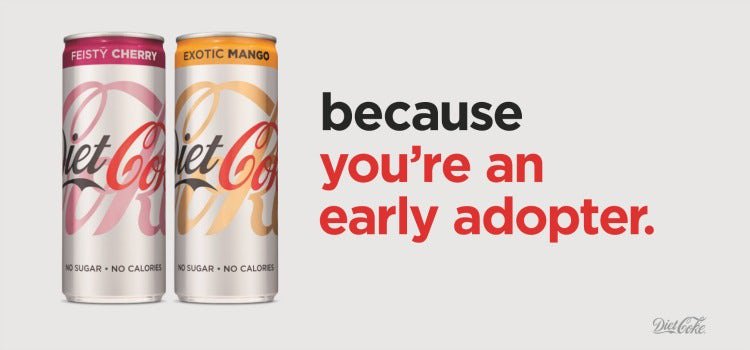
Hiring a public relations agency at the right time is crucial to the success of your brand, especially in this “Amazon Era”. A dedicated PR agency not only helps create brand awareness before and after a product launch, but also offers a plethora of services important to your overall ROI, including securing A-list press coverage, brand exposure, consumer activations, creative campaign ideation, social media management, influencer marketing, brand partnerships, and crisis communications, among other services.
Word of mouth is a powerful tool, however strategic media relations outreach and a measurable public relations program — whether you are a startup or an established brand launching a new product — will help determine the right messaging and strategic approach to ensure you reach your target consumer.
When to hire a PR Agency?
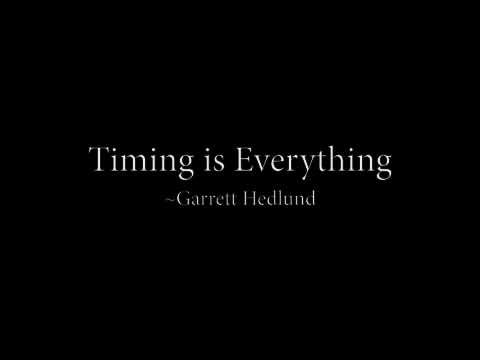
There is a common misconception that brands should engage a PR agency after they launch their product or service or once they are available for distribution, ie, at Amazon or other e-commerce platforms. Hiring a PR firm is like bringing on an experienced partner to help you throughout the “on boarding” process, from start to finish, whether it’s a rebranding, important company development or a product launch. Additionally, it often takes months to get a good PR hit (yes you get PR before 3 months),—but consider the time it takes to select the right media targets, the time it takes to send them samples, the time it takes to follow up, and the timing of their editorial calendar. Additionally long lead magazines like Everyday with Rachel Ray, Vogue, etc. work on “long lead” times which can be 3-6 months. Most long lead publications, as of the day of this writing, are already working on their November and December holiday issues.
Your PR agency will not only promote the launch of your brand or product, but will work with you from the beginning to develop creative strategies and ideas that will attract the media, retailers and distributors and your target consumer audience. They work in partnership with you to create key messages, support with website copy and content development, and conduct focus groups to learn what your consumers are looking for and how they will respond to your product launch. They often help in creating ideas that generate attention from distributors and retailers and make your brand stand out. No one wants to be considered “just another brand” by buyers.
Involving a PR company during your start up stages strengthens your brand’s credibility, builds momentum, and stimulates consumer demand. Consumer trust can also be destroyed when a company promises one thing but delivers another. Look at many poor Amazon reviews and you will see a lot of companies unintentionally over promise and under deliver. Therefore, messaging should be managed carefully. When it comes to a product launch, the consumer will already have perceptions of the brand’s product based on word-of-mouth, social media messaging, media articles, product reviews, and marketing efforts. By having all of these key tactics in place, you have a better opportunity to launch your produce or service successfully.
How does PR support Amazon reach & sales?
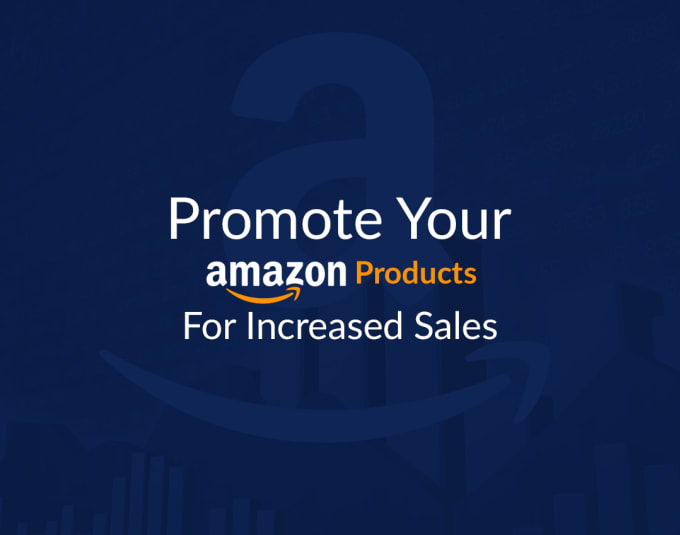
What role does PR play in Amazon sales and distribution? Product availability and Amazon distribution are promoted through public relation efforts via press releases, social media messaging and secured media coverage. When media outlets include a brand or product in a round up or feature article as a result of the PR agency’s outreach, they include the Amazon link where readers can purchase the products, resulting in sales and website traffic.
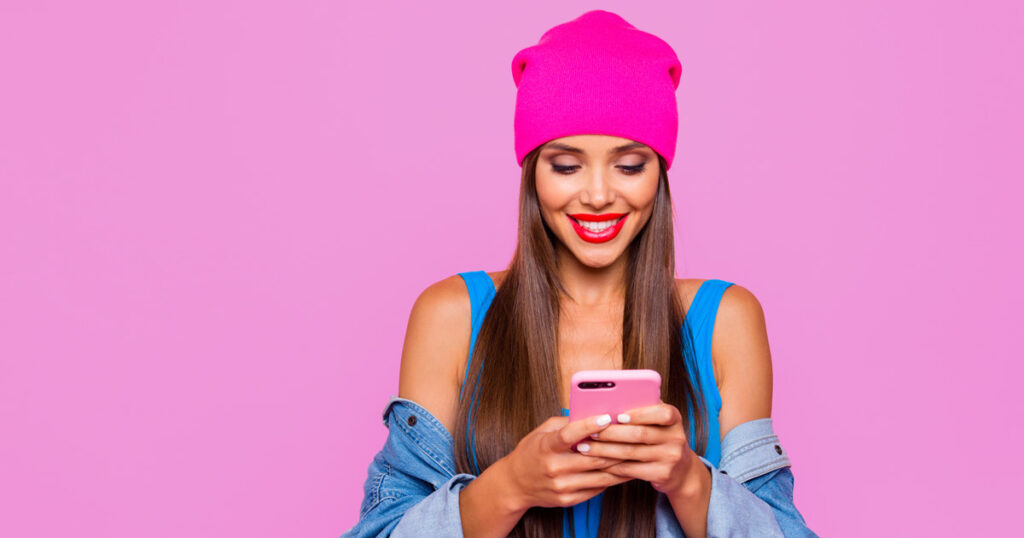
Another way PR can support Amazon sales is through influencer marketing. Influencer marketing has become one of the most sought -after channels to reach consumers organically. Whether we like it or not, content creators and influencers are here to stay and their power and influence in consumers’ behavior and choices will continue to grow.
Like many businesses, Amazon engages with influencers to promote its products through affiliated links. Through the Amazon Influencer Program, influencers receive a portion of the sales of a specific product they promote in their social media or blog when people click through the affiliated link. Although there are no additional fees for brands and Amazon covers the commission for each unit the influencer sells through their shop, there is no guarantee influencers will promote your product unless you are working directly with the influencers.
Here is where your PR agency comes in to support through an influencer partnership and campaign. Your PR agency partner can manage the influencer campaign on behalf of your brand by carefully vetting influencers, providing recommendations, drafting the messaging, providing key branding assets and overseeing deliverables and results.
For a brand trying to increase their sales on Amazon, leveraging influencers is a great way to raise brand awareness, grow exposure on the platform, and generate sales as influencers have the credibility and an audience who is looking for their recommendations.
Want to learn more?
Cascadia has partnered with CIIC (www.ciicnews.com) to provide consulting or project-based PR services to brands looking to successfully compete in the food & beverage industry. Contact Paola Cuevas at [email protected] to learn more about their food & beverage experience and how they can help you get your product in the news and “off the shelves” in no time.
Cascadia Managing Brands offers its clients outsourced sales, brand management, Amazon setup and sales, traditional retail sales, marketing, new product development, operations, production and logistics.
Cascadia Managing Brands helps brands reach critical mass faster, cheaper, better, and smarter. From business plan development to the actual execution of the plan, from strict consulting advice to managing your sales or sales team, marketing and operational plan; Cascadia Managing Brands is the outsourced resource for large and small beverage companies alike.
Cascadia Managing Brands has over 75 plus years of food and beverage experience including Evian, Zico, Hint, C2O Coconut Water, Nantucket Nectars, Fresh Samantha (Odwalla), Naked Juice and many more.
For more information about Cascadia Managing Brands please visit us at http://www.cascadiamanagingbrands.com. Please visit our Facebook Page at http://www.facebook.com/Cascadiamanagingbrands or our Twitter page at http://twitter.com/cascadiabrands.
For additional information about Cascadia Managing Brands go to www.cascadiafoodbev.com
So You Want To Launch A Brand? Why You Should Start Now (Part III)
This is the third installment of So You Want to Launch A Brand? Why You Should Start Now and we will discuss some tactical aspects of a brand launching including basic Point of Sales Material (POS), Presentation, and Insurance. The next installment will cover Distribution strategy and Execution as well as a recap of the three part timeline.
Let’s start with Point of Sale and Presentation.
Point of Sale Material and Presentation
Now that your name has been chosen, your logo and label has been developed and the FDA attorney has approved your label, it is time to start working on developing your point of sale material and distributor or key account presentation. Point of sales should be seen as a “silent salesperson” informing the consumer about your product when you can’t be there to do so.
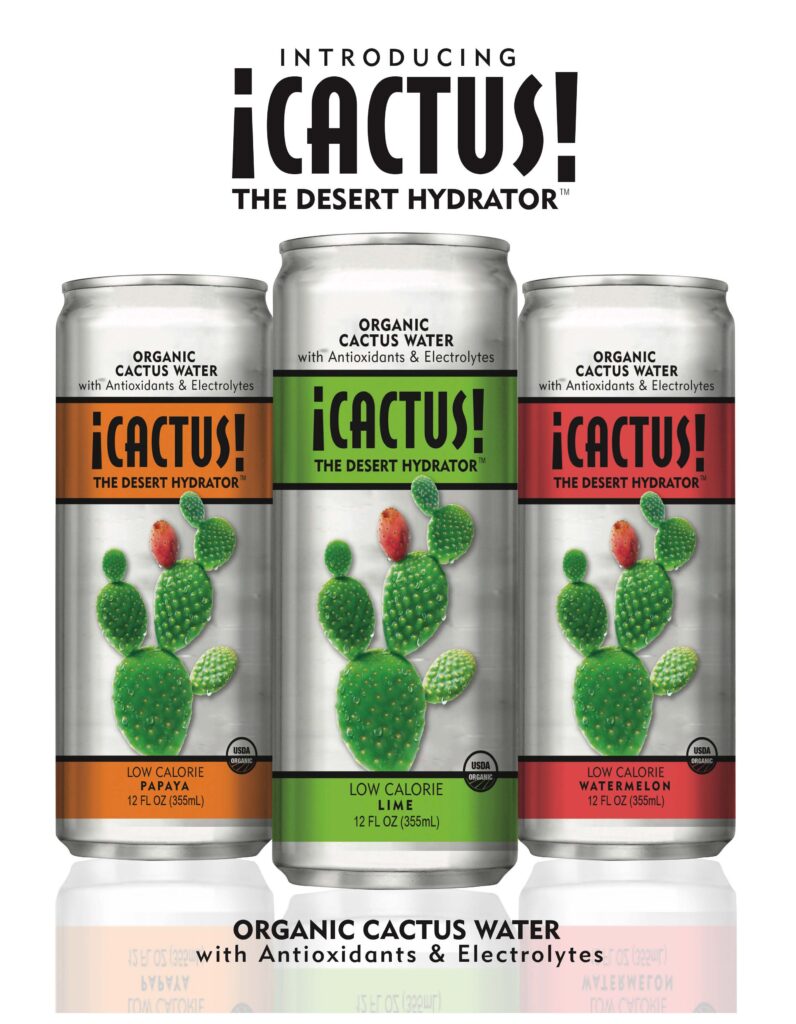
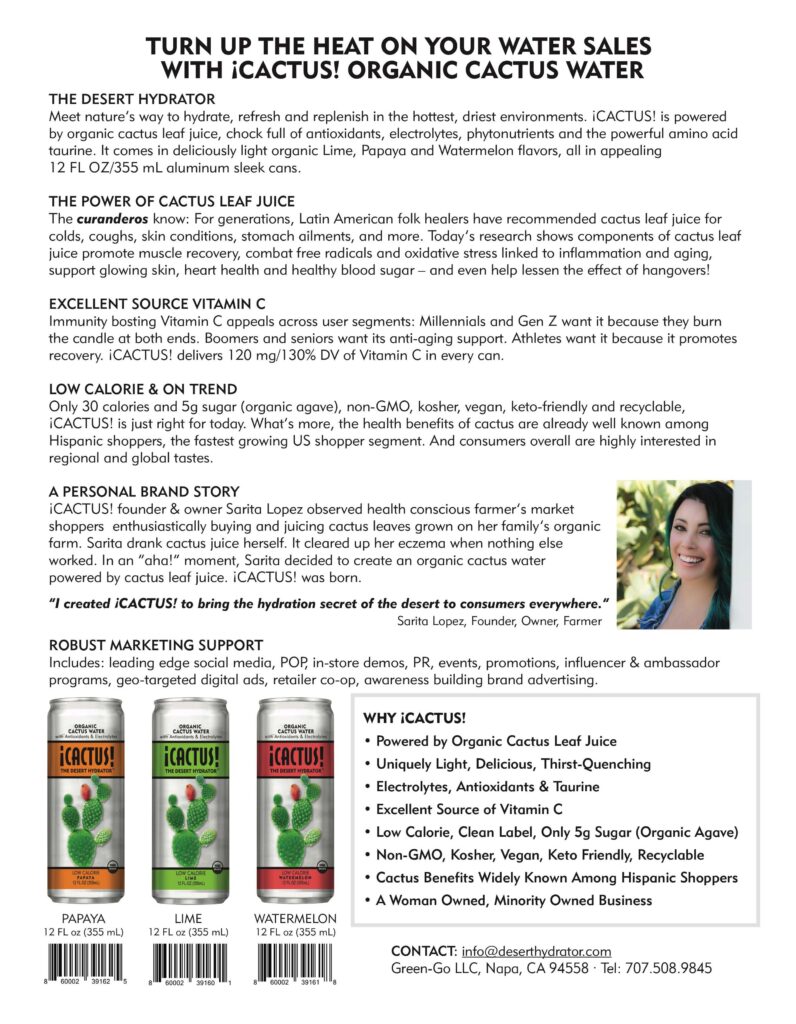
There are a few very basic, standard point of sale needs today:
- Product Sell Sheet with UPC Codes and specifications. Understand that consumers will never see this sell sheet. Your customer here is your distributor or key account. Your distributor and key accounts have a lot of criteria for buying a new product, but, at the end of the day, they both want to know how much money they can make from selling your product! Make sure your headline and graphics grab attention (must key into your USP) and tells them they can make money by selling your product. More often than not, brands develop their sell sheets with a focus on the consumer. Consumers will never see this item.
- PowerPoint Presentation. Every brand needs a 10-12 page presentation showing their USP, features, benefits, bridge (the bridge links features and benefits together and explains what this means to the buyer), planned marketing activity including social media and events, trade show participation, and any category or brand data you can find. You can usually find a lot of this beverage for free or very little using a google search or at Bevnet.com, Beverage Industry or Zenith International. If necessary, and if you budget allows, you can purchase data at Beverage Marketing Corporation, IRI, Nielsen, SPINS and others.
- Cold Box sticker. If you are looking for distribution in refrigerators you should have a stick that you can put on the glass door of the refrigerator promoting your product.
It takes the average consumer 3-5 seconds to make a buying decision. Your point of sale material is a silent sales person when you are not in the store.
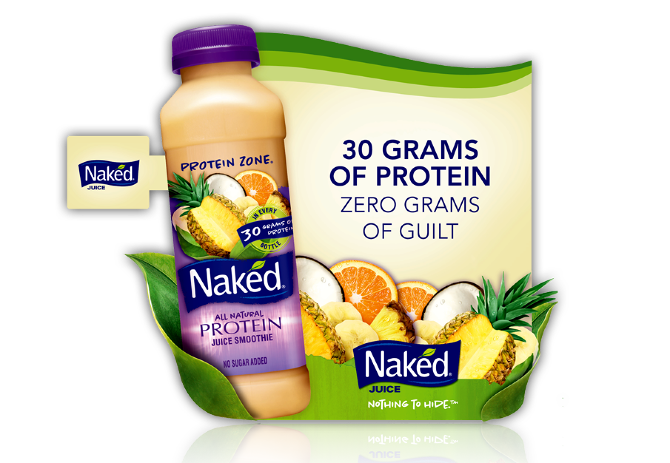
7Channel strip. A channel strip is a piece of laminated plastic that fits into the channel of the retailer’s shelf and promotes your brand.
Wobbler. Wobblers is also a piece of plastic that goes into the retailers’ shelf but wobbles as people walk by and the breeze makes them move.![]()
Display Unit. If you are looking for non-refrigerated distribution, you should consider having a limited amount of display units that you can give retailers to display your product.
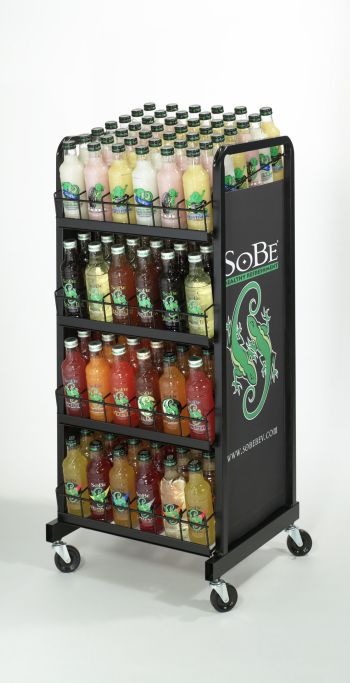
One thing to note is that not all stores allow point of sale material to be placed in their stores.
All things being equal, it should take about 2 weeks to design these items and about 2 more weeks for a printer to print these items. The PowerPoint presentation might take a little more time to create and make look great.
Liability Insurance
Now that your product is being developed and hopefully ready to produce commercially soon, you need to purchase Liability Insurance. Large supermarket and natural supermarket chains will require you to have between $2 million and $5 million of product liability insurance. Otherwise they won’t buy from you. An insurance broker will give you a questionnaire to fill out and your rates will depend, in part, on your answers. You need to know how to fill out the form properly. Let’s assume this process takes 3 weeks from start to finish.
Cascadia Managing Brands is a strategy, brand management and sales execution firm that helps startups succeed. In this bi-weekly series Bill Sipper, Managing Partner, shares his insights on:
Brand Positioning and Logo and Label Development
Intellectual Property and FDA Compliance
Future articles will discuss:
Brand Positioning and Logo and Label Development
Intellectual Property and FDA Compliance
Point of Sale Material and Presentation
Liability Insurance
Distribution Strategy
Sales Execution
Overall Timeline
eCommerce: Thriving in Our New Normal
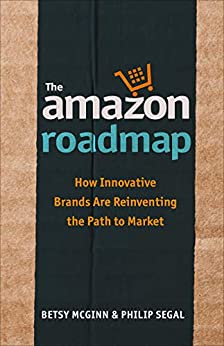
Written By Betsy McGinn and Bill Sipper
I started working with Betsy McGinn several months ago. Betsy is the leading expert on selling on Amazon and has written and excellent book called The Amazon Roadmap: How Innovative Brands are Reinventing The Path to Market.
Betsy has given us an MBA in Amazon and since we have started working with her and since she has been coaching us our clients have greatly increased their Amazon sales. Betsy handles the strategy and we handle the execution.
Betsy and I decided to co-write an article a few months ago. However, I will be the first to note that Betsy is the author of this article and I am just the “co writer”. The information contained in this article will hopefully help you understand and prepare to increase your Amazon sales…
A byproduct of the threat of COVID-19 is that it’s taken eCommerce in the US to new heights. Amazon.com has hired 175,000 new employees, Instacart has been forced to scale in ways and at a speed never dreamed of, and high demand has resulted in continuing out-of-stocks on some essential items we all need. The subset that so many of our clients play in – grocery – has grown in ways no one predicted, and may even accelerate the adoption of online grocery by 4 to 5 years. Brands are scrambling, not only to meet consumer needs, but to up their game in eComm. eCommerce no longer represents incremental “nice-to-have” sales; it’s now essential to a brand’s success, and maybe even its survival.
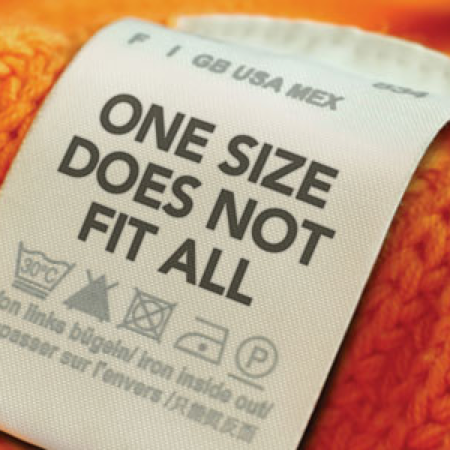
But here’s the challenge: eCommerce strategy and execution aren’t one-size-fits-all, and can’t be relegated to a single division within your company to handle. Everything about this new retail dynamic requires a commitment of the whole organization to truly understand, and to meet the needs of this varied and often confusing channel. Here’s why: Amazon is nothing like Direct-to-Consumer (DTC), which is nothing like Fresh Direct, which is nothing like Instacart. Yet, many companies lump any retailer with a .com in their name into one bucket.
Let’s break it down.
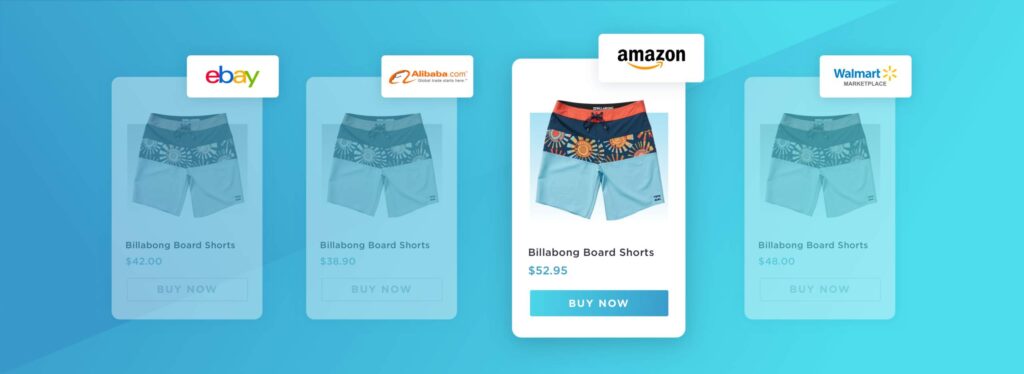
Amazon is the beast of eCommerce. Whether you love ‘em or hate ‘em, they account for 49% on online sales, and are by far the largest online grocery retailer. Their 105 million Prime members convert at a rate exponentially higher than most other eComm options. Seems like a no-brainer to take advantage of the power wielded by this giant, right?
But here’s where it gets tricky.
First, all but the largest CPG brands must sell their products in Amazon’s 3d Party marketplace, which works beautifully for many of the companies we work with, the digital natives that are scrappy and nimble. But it can be anything but simple for many others. Because 3rd Party marketplace means you’re the seller. You own the product, and if you use Amazon’s fulfillment feature, Fulfillment by Amazon (FBA), you’re essentially adopting a consignment model for your brand. So here are the questions: is your company prepared for this? Is finance able to adapt? Can operations label and ship product to Amazon’s fulfillment centers and meet Amazon’s standards? Do you have the right product packs (selling a single unit of most grocery items will not be profitable for your company)? Lots of considerations for your team to work out.
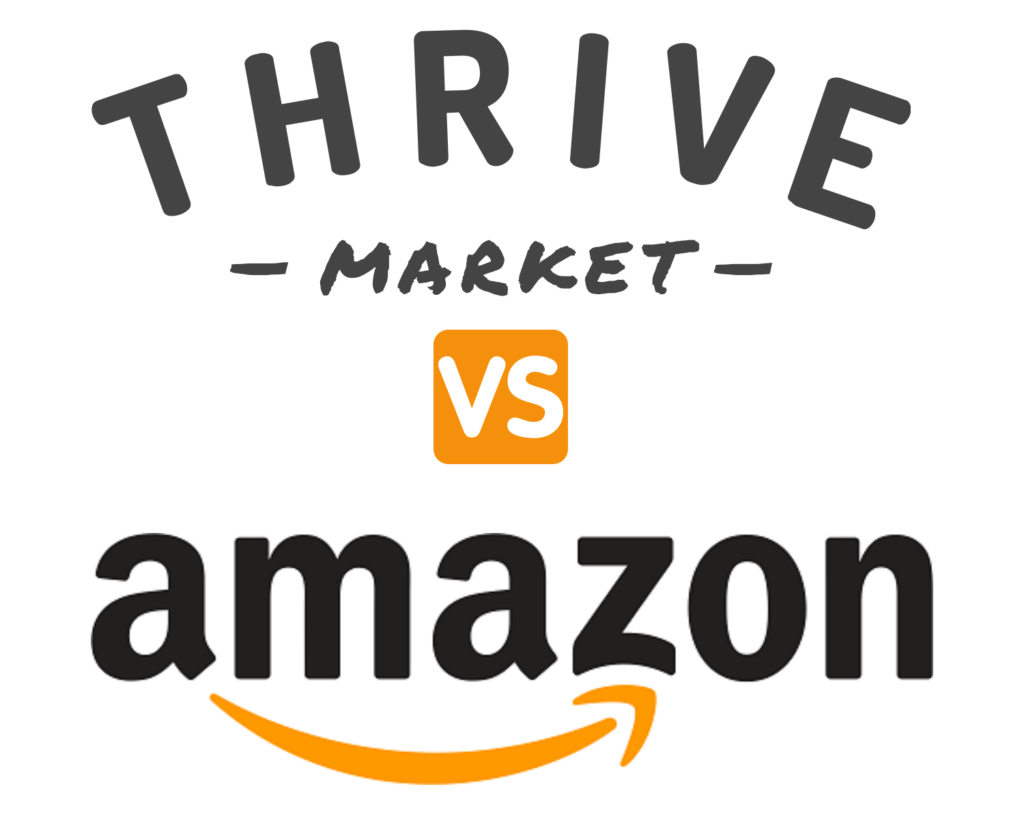
Secondly, there are eComm partners like ThriveMarket and Vitacost, which you may sell through one of your distributors. They provide a basket-building model where individual selling single units does make sense, so are they really any different than any other of your retail accounts? Your major involvement will be around pricing, discounts and promotions – just like your brick-and-mortar partners. So, should your eComm team be responsible for managing these partners?
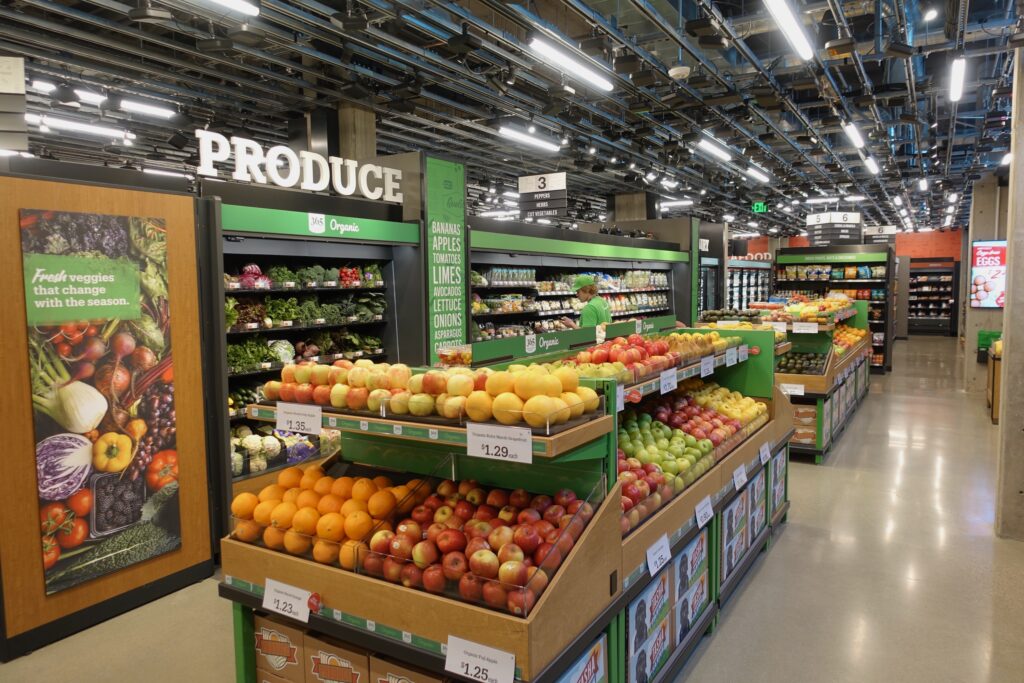
Third, there is eCommerce through Brick-and-Mortar grocery – either click-and-collect or delivery. Often everything about this business is merged with the processes and model of the grocery store itself – rather than a separate buying division, warehouse or operations structure. Promotions and advertising align with what is going on in the store which raises the question: is this a job for your eCommerce team? And to further complicate matters, there are variations on this theme, where a retailer like Walmart will sell some products on their site and the same products in their stores plus some products only through their Third-Party marketplace.
There are also dedicated grocery delivery partners like Fresh Direct, Peapod and Amazon Fresh that purchase product directly from a brand or may use its distributor. Are they eCommerce or simply another grocery account that happens to deliver?
Is your head spinning yet? Because we have a few more questions:
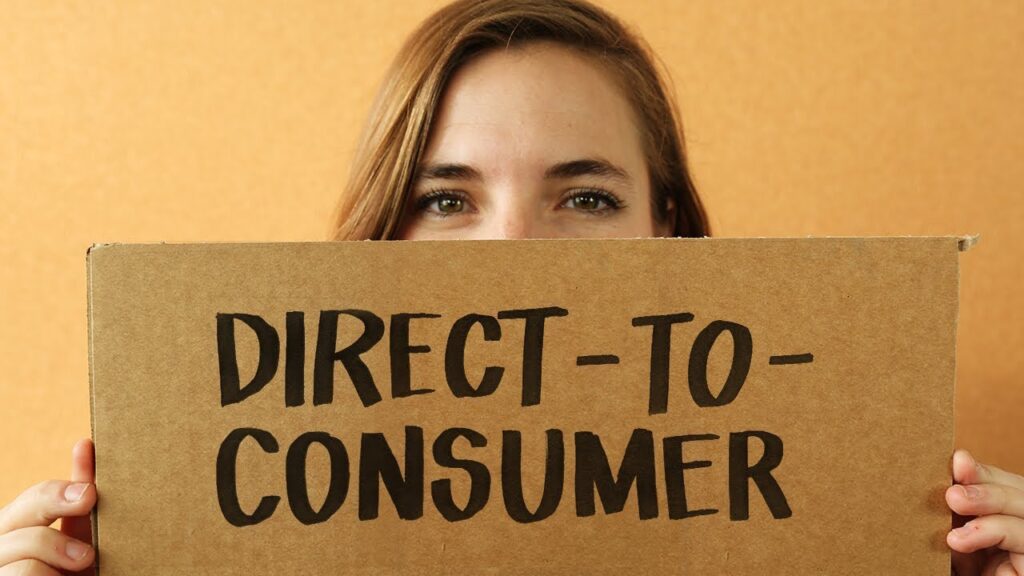
What about your own DTC? Should you sell from your own website (we say yes) and if you do, will you ship your products to your consumer, or use a fulfillment partner? Or fulfill from your Amazon FBA inventory? Do you sell the same products as you sell to other online and brick-and-mortar retail partners or a differentiated set of products? And who in your company manages this completely different model than eComm retail partners
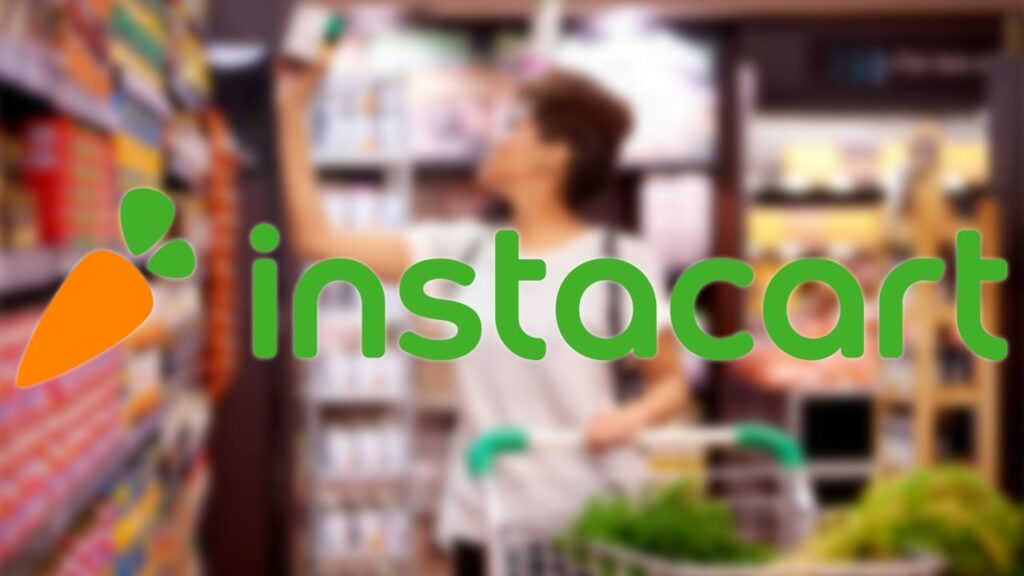
Finally, there’s the “Grubhub of Grocery” – Instacart. They don’t buy or sell anything, but instead, act strictly as a delivery mechanism from grocery stores. But they have instituted features, like coupons and advertising, that can benefit a brand regardless of the retailer the consumer chooses to purchase from. So where does this business live in your company?
All of this is to say it’s time to get serious, figure out how to make this complex opportunity work in your organization, and get in the game. Grocery eComm was already a fast-changing, fast growing channel, and the pandemic crisis has increased that exponentially. Creating an eCommerce team, and putting all these diverse business models on their plate simply won’t cut it. Every brand has to decide if they have the bandwidth to embrace the unique business models listed above, and if they do, figure out how to structure themselves around each one of them.
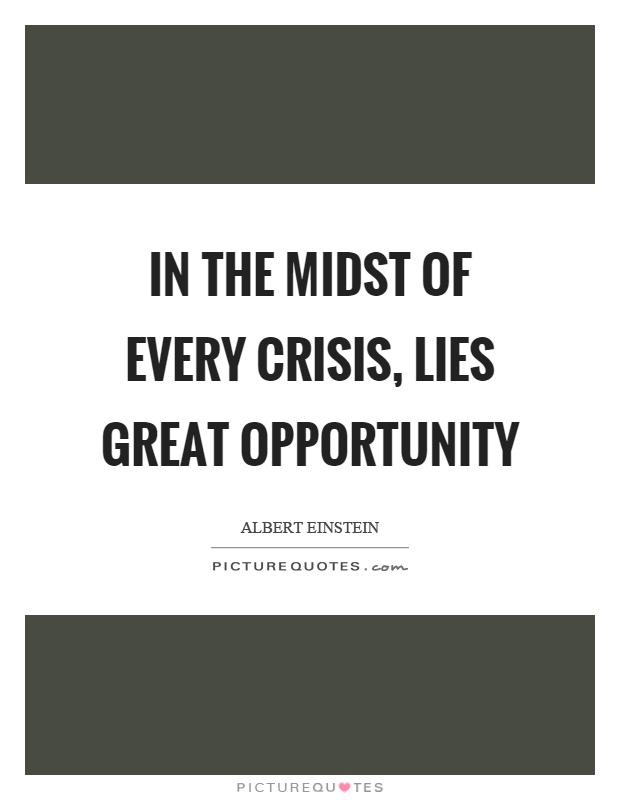
Albert Einstein said, “In the midst of every crisis, lies great opportunity.” And as devastating and painful as the crisis we’re facing now has been for so many people and companies, many of the brands we work with have not only avoided loss, but have been able to able to thrive. By taking time to understand the landscape and doing what it takes to adapt, amidst the chaos, they’ve found their own great opportunity while also providing a great service to their customers.
Written by Betsy McGinn and Bill Sipper
So You Want To Launch A Brand? Why You Should Start Now (Part II)
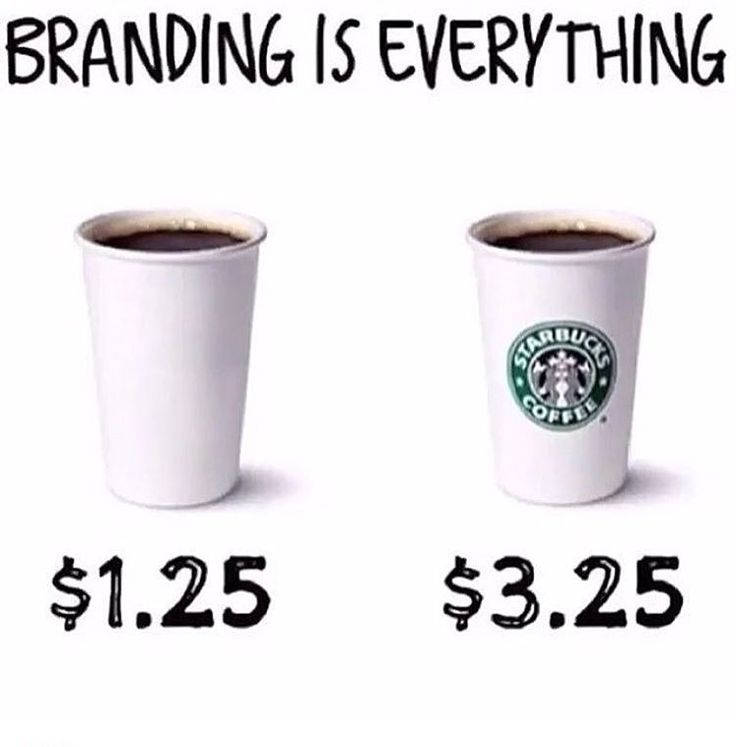
This is the second installment of So You Want to Launch A Brands? Why You Should Start Now and we will discuss Branding, Positioning, Logo and Label Development as well as Intellectual Property and FDA Label Compliance.
Brand Positioning and Logo and Label Development
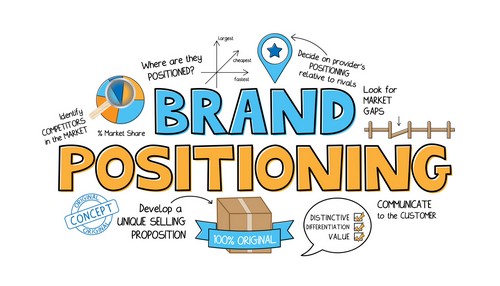
While you are waiting for your shelf life test results, if you haven’t already started, let’s focus on Positioning/Branding/Label/Logo Development. This is a very critical step in the process if not the most critical step.
To start, you need to determine what your Unique Selling Proposition will be. The food and beverage graveyard is cluttered with great tasting food and beverages that don’t sell because there is no Consumer Need. What makes your product different? What makes your product special? Why should a consumer purchase your product?
Sometimes this information is crystal clear to entrepreneurs and sometimes it takes a while. Please understand the world does not need another regular energy drink in the same size can and with the same ingredients of the Energy Drink market leaders.
There are a few ways you can handle product positioning. The first way is to do it yourself. Develop some reasons why you are unique and discuss it with friends and family. Sometimes this works. One of the risks involved in this scenario is that your friends and family might not tell you the truth because they don’t want to hurt your feelings. Another potential problem is your friends and family might not be the same as the consumer demographic you are targeting. However, it can be done and it has been done this way.
Another way to approach branding and positioning and your Unique Selling Position is to hire a professional like Cascadia (in fact Cascadia can do most of these steps for you) or you can hire other professionals like Arena Partners or Modernized Mobile, for example, or another reputable agency who will work within your budget. I have seen very good, small branding firms charge a few thousand dollars and done a great job and I have seen larger ones charge between $50,000 and $100,000. In this case, larger agencies do not always equal better work content and unique positions.
Listen to this. I am going to tell you a secret that will save you potentially millions of dollars. If you do not have a Unique Selling Proposition don’t start a food or beverage company. You will just be setting yourself up for failure.
The branding and positioning process should take about 30 days if you and your branding firm turn around content and feedback quickly.
Assuming you have your Unique Selling Proposition as well as your brand positioning, all of your marketing efforts will flow more smoothly.

Once you have the USP, it is time to design your logo. Logo development is a very iterative process. It can be done within 2 weeks to 4 weeks, again, if you and your designer turn around feedback and work product quickly. However, you need to be careful how you coach your designer and what you tell them. If you tell them you want squiggly lines that is what you will get, but it might not be good for the brand. The better approach would be to tell them you want some sort of abstract art in the logo. Don’t tell them you want the logo in red, for example. Let the designer do their job and give you various options to consider. Wanting what you want just for the sake of having it can create problems in this phase. After all, you don’t want a logo that you love but consumers hate. Remove your ego from the process.
Most branding and positioning firms can also create your logo and label.
Now that you have your logo it is time to start working on your label. Keep in mind during the development of your label you want to create something that will get the consumers attention AND is in compliance with FDA regulations.
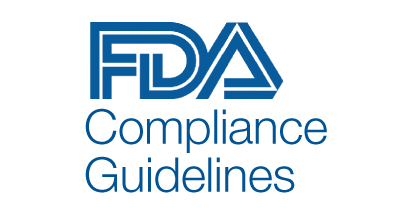
First, your agency or designer need to create your label. After that, you should send it to an FDA attorney for review. Just because other people are saying certain things on their labels doesn’t make it correct or legal. An FDA attorney will also usually give you advice about the best ways to avoid class action lawsuits which are rampant in the industry, especially in California.
The label design and FDA label review (oh by the way, your website copy, point of sale material, sell sheets, and social media content should also be reviewed by the attorney but I won’t include that in the timeline) take about another 6 weeks or so, unless you need to live photography or custom illustration for the label. That will add more time to the process.
Intellectual Property and FDA Compliance

We work with several excellent FDA attorneys. Here are a few: Justin Prochnow, Rachel Gartner, and Rakesh Amin. These firms can also handle your trademarks and patents if necessary. Be prepared for a lot of comments to your label review. Very rarely have I seen a good review without a lot of comments.
We had a client who owned an AMAZING Trademark for a name. In fact, this client could most likely have made a lot of money from a much larger company who was infringing on their logo. Unfortunately, while day-dreaming one day, I searched their trademark (to this day I still don’t know why) only to find they never renewed it and it expired. They lost all the leverage they had on the larger company and, in fact, had to get the larger company to explicitly allow the Company’s trademark in a very specific channel. Not optimal at all. But I digress.
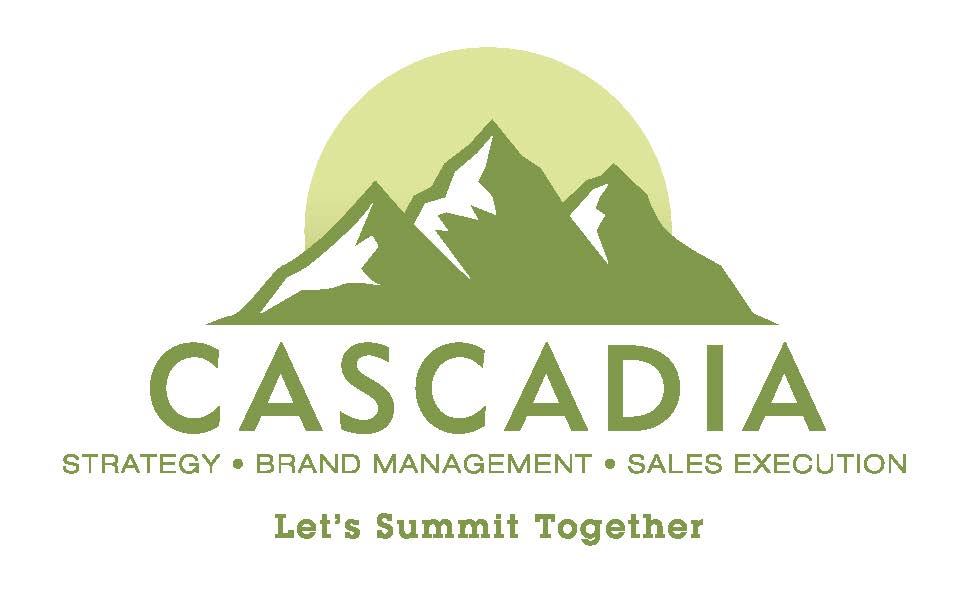
Cascadia Managing Brands is a strategy, brand management and sales execution firm that helps startups succeed. In this bi-weekly series Bill Sipper, Managing Partner, shares his insights on:
Brand Positioning and Logo and Label Development
Intellectual Property and FDA Compliance
Future articles will discuss:
Brand Positioning and Logo and Label Development
Intellectual Property and FDA Compliance
Point of Sale Material and Presentation
Liability Insurance
Distribution Strategy
Sales Execution
Overall Timeline
The History Of The Beverage Industry (Part 8) – All Time Commercial Advertising Campaigns
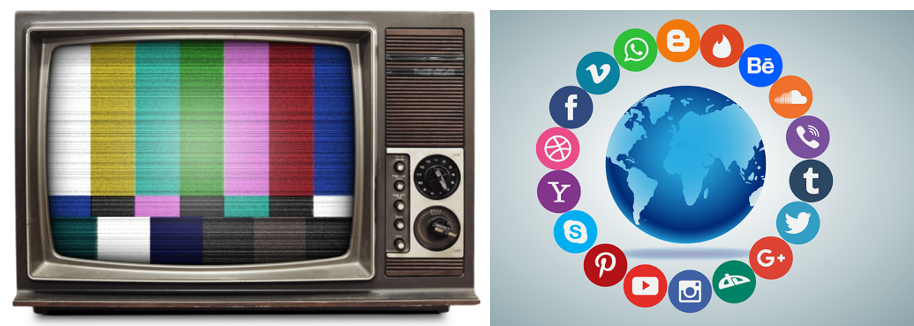
Advertising can be traced back thousands and thousands of years to ancient civilizations. Be it in ancient Egypt, Greece, China or Rome – sharing a message to spread the word to others is a concept as old as time itself. From wall or rock paintings, to papyrus posters, newspapers, billboards, all the way up to radio, television and digital commercials – its transformation is synonymous with the evolution of society.
In terms of its role in capitalist economies, that really took off in the 19th century with the promotion of books, tobacco, automobiles, food, beverages and cosmetics among other things. The concept of creating a campaign around a product to attract and educate consumers started to boom in the early 1900s. Creating a culture, a lifestyle, in which a specific company’s product “embodied” is a concept that, despite its evolution, has been practiced for well over 100 years now. The means in which it is delivered however, has never been more captivating than it is in the modern era.
As televisions became a staple in family homes, so too did commercials. As computers became a staple in family homes, so too did digital ads. These advances in society opened up the capabilities for ads, in a more creative fashion, to captivate a larger audience with slogans, reads and visuals effects that connect with the belief systems of a larger population of people.
Back to the specifics of the food and beverage industry, certain companies have been exponentially more successful in creating a culture through their advertising campaigns (commercial or digital), than others. How do you turn a taste into a visual spectacle? Can you think of any that come to mind? Here’s a good place to start – if you can remember a commercial from over one, two, three or four decades ago, odds are, that company did a pretty good job.
Coca-Cola comes to mind, Pepsi comes to mind, Budweiser comes to mind among many others we will dive into. In this blog, we will take a look at some of the best commercials from the food and beverage industry that have become timeless identifications of a company creating a culture that goes beyond their product.
Coca-Cola vs Pepsi
When it comes to all-time commercials in the beverage industry, it is no surprise two of the industry’s giants produced some of the most memorable. Coca-Cola and Pepsi have set the pace for generations while competing with one another tooth and nail. They battled over product placement in movies, running long ads in the 1950’s 60’s, as well as competing for celebrity endorsements. The two combine to spend over $3 billion on advertisements on an annual basis across their different products. Naturally as industry leaders, many of their ads be it during Super Bowls or around the holidays, have become model templates for how to create a successful campaign.
Let’s look at a few of the best from the core products, that exclude the companies sub products such as Sprite, Mountain Dew, Frito-Lay, 7-Up, Gatorade Powerade, Aquafina, Dasani and Vitamin Water.
I’d Like To Buy The World A Coke – Coca-Cola
I’d Like To Buy The World A Coke to this day is still one of Coca-Cola’s most famous commercials from 1971. It portrayed a positive message of hope and love by a group of teenagers from all different cultures that brought a sense of unity around the product. The song was so popular it later became a full-length song and was a hit record in the U.S. and the UK. Coke has used this ad nearly a dozen times since it’s original airing in 1971 which ran during the Super Bowl. The ad cost approximately $250,000 at that time which was the most expensive commercial in history.
“Hey Kid, Catch!” -Coca-Cola
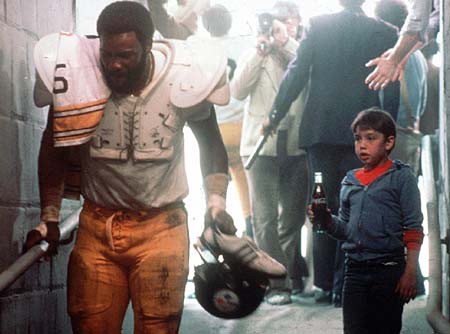
Chances are whether you are a baby boomer or a millennial you know where that line is from. That is the power of a great commercial. That is the power of a message that resonates so deeply within its viewers that it essentially becomes timeless. “Have a Coke and smile” personified by the Pittsburgh Steelers star defensive lineman Mean Joe Green, who didn’t get his nickname for being a happy and nice guy.
Because of his rugged personality, and being that he was probably among the last to show any sort of empathy, especially to a child, the commercial really drove home the message during the 1980 Super Bowl as the hobbled Green gave his game jersey to a kid who gave him his Coke. If Coke can make Mean Joe Green smile, it can make you smile too.
Whole New Generation – Pepsi
As Coke had the leg up on Pepsi during the 70’s, Pepsi Co worked hard to inspire the next generation of Cola drinkers to transition over to their product. To the tune of Michael Jackson’s famous “Billie Jean” the “You’re A Whole New Generation” campaign was born in the 90 second commercial featuring Michael Jackson and his crew along with a younger group of talented dancers, all drinking Pepsi. This 1984 classic also aired during the Super Bowl. Jackson actually suffered burn injuries on the set of making this commercial in a pyrotechnic accident.
Cindy Crawford – Pepsi
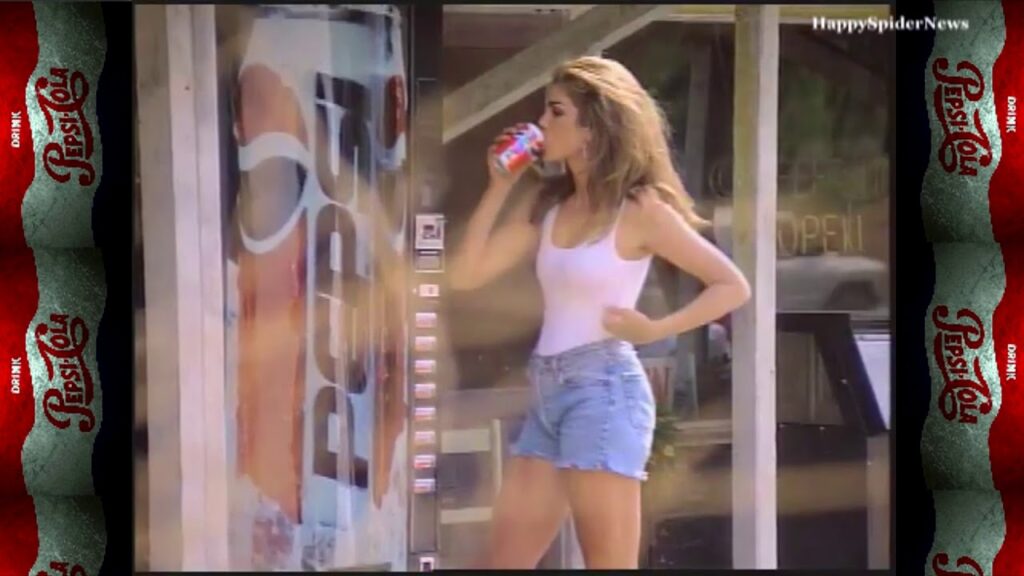
No Pepsi commercial is referenced quite as much as Cindy Crawford’s 1992 moment, in which she does nothing but walk out of a car and drink a Pepsi. Pepsi was featuring a new can in a sexy way with the stunning Crawford who had two poor young boys drooling the entire time. It’s doubtful even an ice cold Pepsi would have quenched their thirst. The commercial was shot to the famous “Just One Look” song by Doris Troy.
Budweiser
No beer company has had more of an effect in advertising than Budweiser over the last century. Their campaigns have successfully hit multiple different demographics, often at the same time. Between their core product, Budweiser, and Bud Light which has grown with the popularity of the light beer sector, none of their competitors have been able to replicate the cultural influence that their campaigns have generated. While their commercials over the last 5 years have been more “light” centric to the younger audience, here are some of the most notable Budweiser commercials in the company’s history.
“Bud – Weis – Er” – Budweiser
Airing during Super Bowl XXIX in 1995, the Budweiser Frogs fittingly named Bud, Weis and Er revolutionized the alcohol advertisement campaign industry with their catchy croak of their respective names shot at “the swamp”. It has been dubbed as one of the greatest Super Bowl commercials of all time and as a result of its success, the american beer company produced several commercials at “the swamp” afterwards, with other animals taking the place of the original frogs. Throughout the 90’s it became a mini series in itself on Super Bowl Sunday as viewers anxiously awaited the new year’s version.
“Whasssssup” – Budweiser
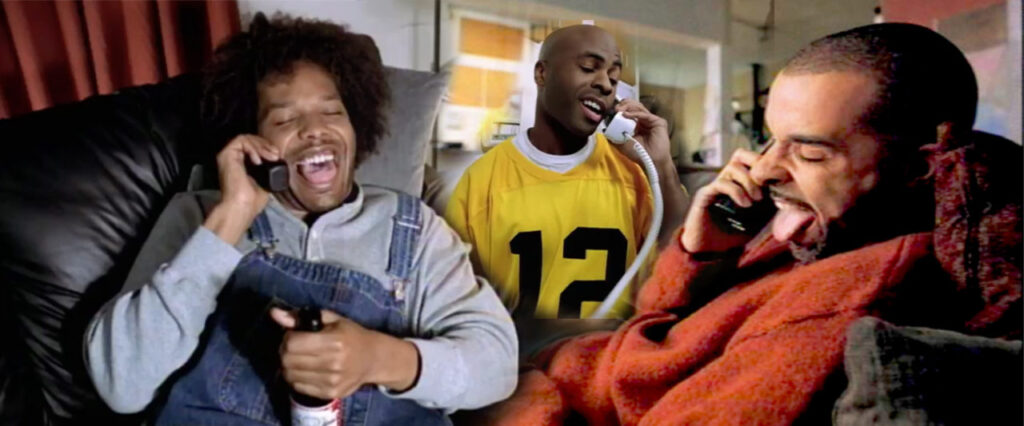
One of the most memorable sayings from the turn of the century, Budweiser single-handedly turned a greeting into a cult icon and pegged it to their drink. It became a cultural saying even among kids which demonstrated the kind of outreach the campaign had. Budweiser’s website traffic had almost tripled as a result of this ad. There were several other renditions that came to follow as a result of its success.
Clydesdales 2002 & Clydesdales 2013 – Budweiser

The Clydesdales have been around since the 1930’s and have been a staple advertising campaign for Budweiser through the decades. These two touching commercials hit home for Americans in the 2002 and 2013 Super Bowls (see the campaign trend here). Respectively, the ads captured the theme of unity, patriotism and brotherhood. Perhaps none more powerful than the ad of 2002 that ran in honor of 9/11.
Other Notable Campaigns
The Most Interesting Man In The World – Dos Equis
“He’s been known to cure narcolepsy just by walking into a room. The Police often question him, just because they find him interesting. His blood smells like cologne. He once had an awkward moment, just to see how it feels.” He is,the most interesting man in the world, and while he doesn’t always drink beer, when he does, he makes it a Dos Equis.
The Most Interesting Man In The World campaign made Dos Equis a desirable product in a time when craft beer was taking over the U.S. and sales on imported beer were dipping. Their campaign broke the norm of other beer companies advertising to a younger audience, where on the contrary they portrayed their product as the sophisticated selection.
Red Bull Gives You Wings – Red Bull
You probably remember some of the first Red Bull commercials made, the famous cartoons that were vital in creating the culture of “Red Bull Gives You Wings”. The commercials early on were nothing extraordinary, at times even a bit corny. It was some variation of a cartoon, someone drinking a Red Bull, growing wings, then flying. So simple yet so effective, the slogan actually led people to believe the product would give them wings. This was later settled in a lawsuit believe it or not as people actually thought they would be able to fly. The effectiveness speaks for itself.
The company has been the most successful energy drink world wide as a result of their marketing campaigns. The commercials have taken a shift towards athletics, specifically in extreme sports, as Red Bull is a major international sponsor for events, teams and athletes. Those campaigns have become known as “The World Of Red Bull” which include powerful sporting footage along with inspiring quotes. Despite the new style, Red Bull still close those campaigns with the catchphrase “Red Bull Gives You Wings” be it verbally or written.
Be A Pepper – Dr. Pepper
Airing in the 1970’s, the David Naughton “Im A Pepper” jingle has been renowned as one of the most catchy jingles in advertising history. “Be A Pepper” was the catchphrase for the minute long ad that even included Popeye the Sailor Man chugging down a Dr. Pepper in place of his regular spinach. The song was written by, at that time, jinglist Barry Manilow.
“Oh Yeah” – Kool Aid
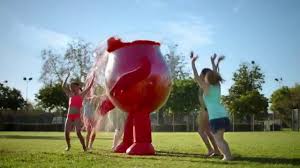
Who didn’t love a Giant pitcher of Kool-Aid crashing through the wall to deliver a thirst quenching beverage? That became the synonymous theme of their commercials over three decades with the giant Kool-Aid man always showing up when children needed a cold drink. Starting in the 1980’s, it is so timeless it has been featured in Family Guy episodes and in a Dane Cook stand up special.
Murder Your Thirst – Liquid Death
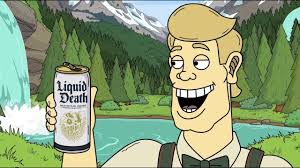
I wanted to include this campaign not only for how incredibly unique it is but to demonstrate a transition the advertising space is seeing now in the digital era, with companies running campaigns on YouTube and other online platforms. Liquid Death is a canned water product we represent, that brings quenching your thirst with water to a whole new level. “Murder Your Thirst” along with “Death To Plastic” are the two flagship slogans.
The brand appeals not only to an ecofriendly approach with their packaging, but additionally to a hardcore artistic audience in a beverage space that is generally thought of as a healthy yet boring. You’d be hard pressed to find a campaign like this airing on television, which is why brands like Liquid Death are utilizing other means to spread the awareness of their products.
Fun Commercials
In effort to include a few more fun videos for you all to enjoy, take a look at these great videos below.
Top Super Bowl Commercials
Top Doritos Commercials
Perrier (1991)
Key Takeaways
There are creative advertisements that stick for a couple hours or become a topic of discussion among friends and family – and then there are creative advertisements that change the way you perceive and remember culture. These advertisements were so well done that they have become iconic, influencing us even till this day, in some cases over 4 decades later. Although they are all unique, the one thing they have in common is their innovation. It pays to be different and to set the trend.
How to Cut a Sound Trail thru the Amazon Thicket
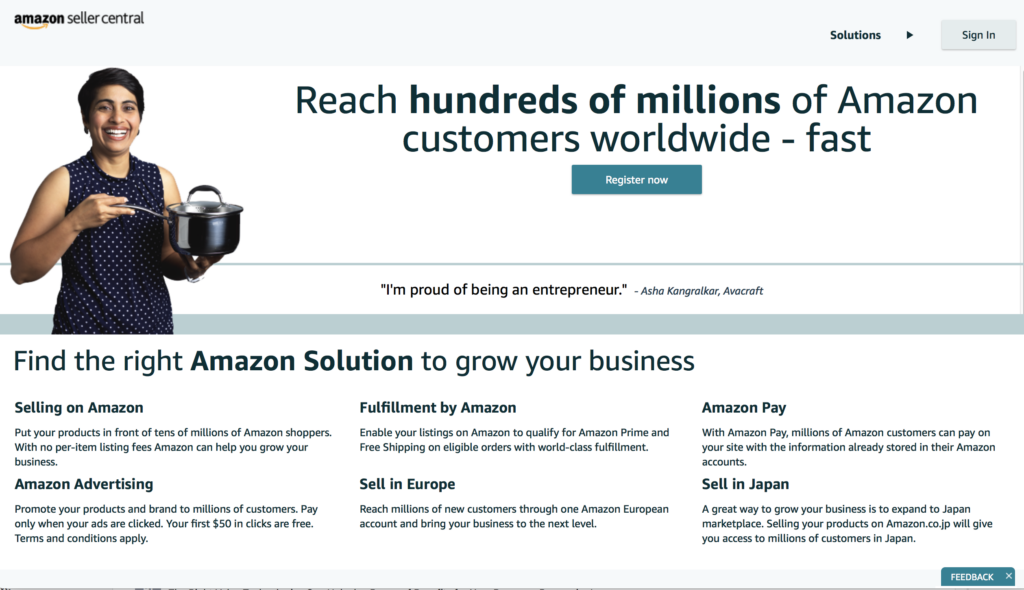
As published in Beverage Business Insights May 11, 2020.
There’s little question that online sales’ continuing inroads in the bev biz have become accelerated as conventional shopping has become more tortuous during the coronavirus pandemic. Data shared on Monster Bev earnings call last week showed that rival Celsius may be still modest at retail but it owns 10% category share on Amazon. BellRing Brands’ ceo said ecomm has jumped to 10% share of sales and may stay that way even post-pandemic. Those are eye-popping stats. Should your early-stage brand make the leap? Does the chaos of the current crisis make this a good time or a bad time do so? Bill Sipper, partner at Cascadia Managing Brands in Ramsey, NJ (CascadiaFoodBev.com), offers a primer here on what factors should go into your decision-making and how to plot your strategy.
“Our vision is to be the earth’s most consumer-centric company; to build a place where people can come to find and discover anything they want to buy online.” That’s Amazon’s mission statement. From a consumer perspective, they have achieved their goal. But what is missing from that mission statement? You, the vendor.
As much as Amazon cares about making consumers happy is as little as they are concerned about their vendors. Amazon can be daunting for even the most experienced food and beverage executive. (It certainly was a learning curve for those of us at Cascadia Managing Brands.) It is even more difficult for an early-stage entrepreneur with limited understanding of their digital space. And as I noted, Amazon doesn’t necessarily work hard to make it easy and intuitive for you. Having been steeped in these issues for our clients in recent years, I’m offering a few guidelines for navigating this challenging but potential rewarding channel.
A word first about timing. Much has been said about Amazon focusing on “essential items” during this pandemic. Yes, food and beverages typically are considered essential, but your early-stage brand may not be so essential at a time many consumers are more focused on staple items. Does this imply you should put off a launch until things settle down? Not necessarily, because of the time frame involved. It will usually take 8 weeks or more to get items listed on the platform. Amazon people are very meticulous and want information the way they want it. For example, quite often Amazon will ask you to prove that you are the brand owner and require specific, and somewhat odd, documentation to support that. It is not uncommon to receive approval to steps in your account only to have them unapproved the following day, as the company requests additional information. So the sooner one starts this process the faster the products will find a berth on the great ship Amazon.
If you decide the time is right to proceed, you first need to determine which Amazon platform is right for your brand. Amazon is not one unitary service. Rather, it offers 3 options, each with its pros and cons: Amazon Vendor Central, Amazon Seller Central Fulfillment by Merchant, and Amazon Seller Central Fulfillment by Vendor. Which platform do you choose? It all depends on your brand’s needs and your operational strength. You need to think this through because success on Amazon starts by choosing the optimal platform.
Product type and packaging are important here. Take ASC Fulfillment by Merchant, in which the order is placed on Amazon but the product is shipped by you, the seller. This is a much better platform for pills and powders, refrigerated products and glass packages (9 out of 10 times Amazon will not ship glass directly). Then there is ASC Fulfillment by Amazon, where you deliver your product to the Amazon distribution centers on consignment and it is shipped to the buyer by Amazon. This most often is better for shelf-stable and RTD food and bevs. Each of these platforms offers different options and opportunities. For example, Vendor Central allows you to participate in Amazon Pantry, Amazon Fresh and Prime Now, while the other platforms do not. ASC FBA automatically gets you a Prime designation while ASC FBM Prime offers that possibility but not a guarantee. This may all sound like gobbledygook to you now, but these are essential, crucial distinctions.
Your digital shelf on Amazon is completely different than your retail shelf. Although you will find some level of uniformity, realistically there is much more flexibility in digital. For example, in traditional brick & mortar you would most probably want to offer each one of your sku’s, sometimes individually, sometimes in multipacks, and sometimes in cases. However, you are limited to the room a retailer allows you on the shelf. The digital shelf is much different. You can offer any pack you want, whether a 3-pack, 4-pack, 6-pack or 12-pack. Variety packs and packs that meet a consumer subscription cadence are the gold standard on Amazon. So this is a key part of your strategizing for this platform. You need to settle on the right size and the right pack count with the right order cadence, and of course make this all work with your supply chain.
Price is also important – but maybe not as important as you might assume. When Amazon shoppers are polled on what’s most important to them, the top three responses tend to be: (1) free shipping, (2) most likely to have the product I want, and (3) better prices. According to Consumer Research Report by Salsify, 2019 69% of consumer will abandon a product page for lack of information or details, a significantly greater driver than price.
Therefore, the content on your digital page (again, think of it as a shelf) is critical, from the type and number of photos, to the titles, to the bullet points. All these things affect your search ranking. Reviews also help in the search rankings and consumers like to see what other people are saying. Focus on getting quality reviews, not quantity.
Last but not least is promotion and advertising. You don’t have an Amazon business without marketing inside Amazon and out. But don’t spend one penny until your content is right. Amazon offers programs ranging from pay-per-click (PPC) to brand sponsorship, product sponsorship and brand store. These need to be combined with search engine optimization and key words on your pages. Yes, it’s a complex matrix, but again, you won’t have a successful Amazon business without thinking these issues through.
I should note that one of the downsides of Amazon is the lack of overall data you will receive about your consumer. Yes, Amazon captures a great deal of data about its shoppers and their purchasing habits, but it doesn’t share much of it. For vendors using Seller Central, the only consumer data you will be able to see is age, household income, education, gender and marital status. Amazon owns the relationship with the consumer. Vendors would receive a lot more consumer data if they sold their products on their own website. But consider this simple bit of arithmetic: Amazon receives 200 million unique views per month, while the average food and beverage startup’s website will receive no more than 50-100 visitors. So do the math. More often than not, even with a lack of consumer data, the sheer consumer volume on the Amazon platform will offer greater sales. Brands would have to spend a considerable amount of money to secure enough views of their website to come close to Amazon’s sales potential. It is a tradeoff that needs to be considered.
If you have a very large brand and if you have a lot of capital to invest in Google search terms and pay-per-click ads, and you have a large database of social media followers, you might opt to sell your product from both your website and Amazon. That could yield incremental sales and capture your consumers’ data directly. However, if you don’t have a large amount of capital (although you still need some to support your Amazon marketing), then it is best to focus on selling your product on Amazon. If you happen to generate sales from your website, that is great. But I would not invest a lot of time there. It is worth noting in this context that Amazon is the #1 search engine for retail products. More than 70% of online consumers begin their product searches with Amazon, versus just 11% with Google. Think about that.
If you’ve read this far, you understand that Amazon can be very difficult to set up if you don’t know what you are doing. It is not as easy as just throwing some photos and words on a page. Today, many brands launch exclusively on Amazon because the barrier to entry and costs are relatively low compared to the requirements of operating in the bricks-&-mortar world, from recruiting distributors to paying slotting fees to running in-store demos. Amazon sold $8.2 billion of grocery items in the US last year (compared to Walmart’s online business of just $2.4 billion). It can be a great place both for large brands and small ones. But only if you have a plan.
So you Want To Launch A Brand? Why You Should Start Now
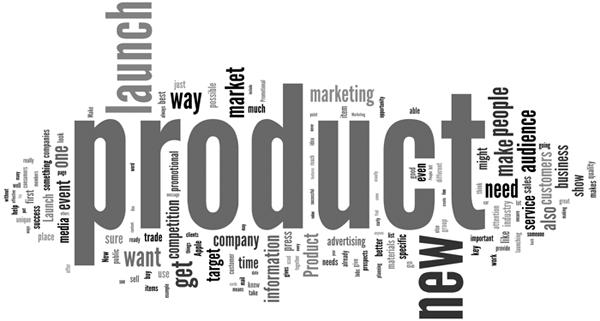
I started writing an article showing the steps and timeline for creating a new food and beverage brand. I wrote more than I expected so I decided to post the article in bite size pieces here on a bi-weekly basis.
The pandemic, amongst other things, has caused many entrepreneurs to pause and re-think their strategy. Many entrepreneurs who have great new food and beverage ideas are waiting to see what happens. I can say, that is a very bad strategy for entrepreneurs because while they wait, others will be moving forward and will be the first to gain shelf space when the country goes back to our new normal.
Let’s look at a typical timeline for a new food or beverage item. For arguments sake, let say you already have an idea in your head. What do you do next?
Research and Development
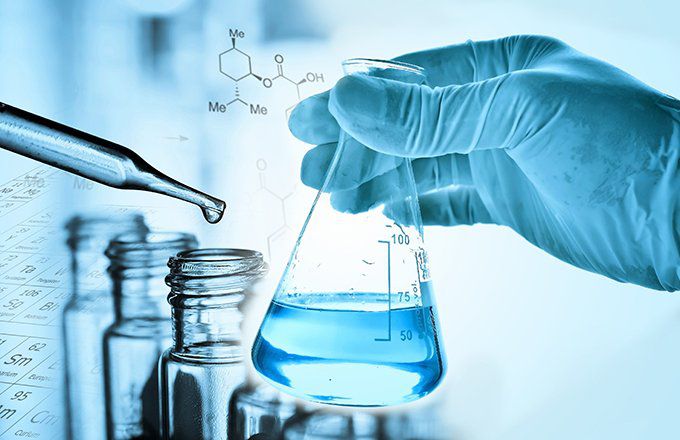
Let’s start with research and development. You might be able to create your product in your kitchen today but it will be much difficult once you move to the production phase. For a very basic example, let’s say you are using Heinz ketchup as an ingredient. If you were to order Heinz ketchup in a 50-gallon drum, the minimum size you can usually order for a production run, it would be very expensive. Depending on how much you use, Heinz Ketchup may make your product too expensive to sell or too expensive to make a profit. Heinz ketchup has a certain taste profile. When you move into production you will most probably need to buy a less expensive but high-quality ketchup. Where do you go for that? How do you sample the different types of ketchup being sold in bulk? Will the manufactures send you free samples if you are a startup?
This all leads up to you probably should hire a person or company, like Parkside Beverage, Beyond Brands, or Metabrand amongst other reputable firms. Get your recipe or formula done right the first time. In the grand scheme of things their fees are not a lot of money and you need to get it right the first time. Re-formulating takes time and money.
I have been on the floor of production facilities with clients who created their own recipes and were trying to adjust the formula on a fly. It was a disaster. I remember one time being on the production line when someone’s formula would not work because the ingredients were too thick and they were clogging the filters. That costs a lot of money. The client had to pay for the entire day of production even though he/she was never actually able to produce their product. My advice, stick with the professionals and they will save you a lot of money in the long run.
Now let’s look at the timing and timeline. Formulation companies aren’t waiting for new entrepreneurs to contact them. Even during these Covid 19 times, reputable formulation companies are still busy. They point is you can’t just pick up the phone and expect them to get started immediately. It might take two weeks until they can accept your business. It might take them time to order special ingredients.
Once they create the first batch of samples for you, and I am sure this will not be the last batch of samples, and you consider the time it takes for them to mail you the samples, and the time it takes for you to review the samples and send comments back to the formulator, and they eventually finalize the formula, consider 4 more weeks go by.
Now you have your formula. Great start. Do you want it to be GMO free? Organic? Kosher? These processes take time and someone has to fill out all the paperwork and get all the information for the certifier. My last go around with a GMO-Free certifier took 6 months because they are backed up. However, let’s say it takes 3 months. However, assume you can work on other parts of your product during that time period.
Shelf Testing
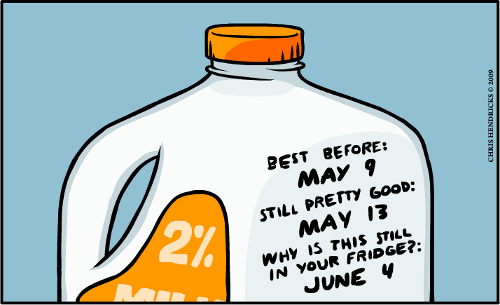
Let’s consider the next step being Shelf Testing. Before you produce your product, you want to know what happens to your product after being exposed to different levels of heat, cold, light, etc. Are any bacteria growing? What about yeast, pH, mold, salmonella, E. Coli, listeria, staph, aureus etc.? How long will your product be on the shelf before the color or taste or aroma begin to change? And this isn’t just a “nice to have”. Retailers and Distributors may request to see the shelf life test results.
According to RL Food Testing Lab, Product Safety Testing will take different times depending on the type of item you are testing.
Here are a few examples:
- Beef Jerky 9 months – 1 year
- BBQ Sauces 4 months – 6 months
- Pasteurized Dairy Products: 3 weeks
- Raw Juices 5 days
- Cakes, Cookies & Other Bakery Goods WITH preservatives 30 days
- Salsa 3 months – 4 months
But now, you need to test for shelf life. How long will your product last before going bad or before losing taste, aroma or even color?
The rule of thumb regarding shelf life testing, depending on the product, is that a product needs 1 week of testing for every month of shelf life you are looking for. But, that timeline may be a little bit over cautious. For the sake of this article, let’s say it takes you 90-120 days until you get your test results.
Cascadia Managing Brands is a strategy, brand management and sales execution firm that helps startups succeed. In this bi-weekly series Bill Sipper, Managing partner, shares his insights on:
Product Formulation
Certifications & Testing
Future articles will discuss:
Brand Positioning and Logo and Label Development
Intellectual Property and FDA Compliance
Point of Sale Material and Presentation
Liability Insurance
Distribution Strategy
Sales Execution
Overall Timeline
